Cottage gardens represent the perfect blend of charm, functionality, and natural beauty that transforms any outdoor space into a romantic retreat. These informal gardens originated in rural England, where families combined practical necessity with aesthetic appeal by growing flowers, herbs, and vegetables together in delightful abundance. Unlike formal garden designs with rigid structures, cottage gardens embrace a carefree, densely planted approach that encourages self-seeding plants and naturalistic growth patterns. Today's cottage garden ideas draw inspiration from this timeless tradition while incorporating modern techniques for creating sustainable, low-maintenance spaces that attract pollinators and provide year-round interest through carefully selected plants and charming design elements.
1. Classic Cottage Garden Rose Collections
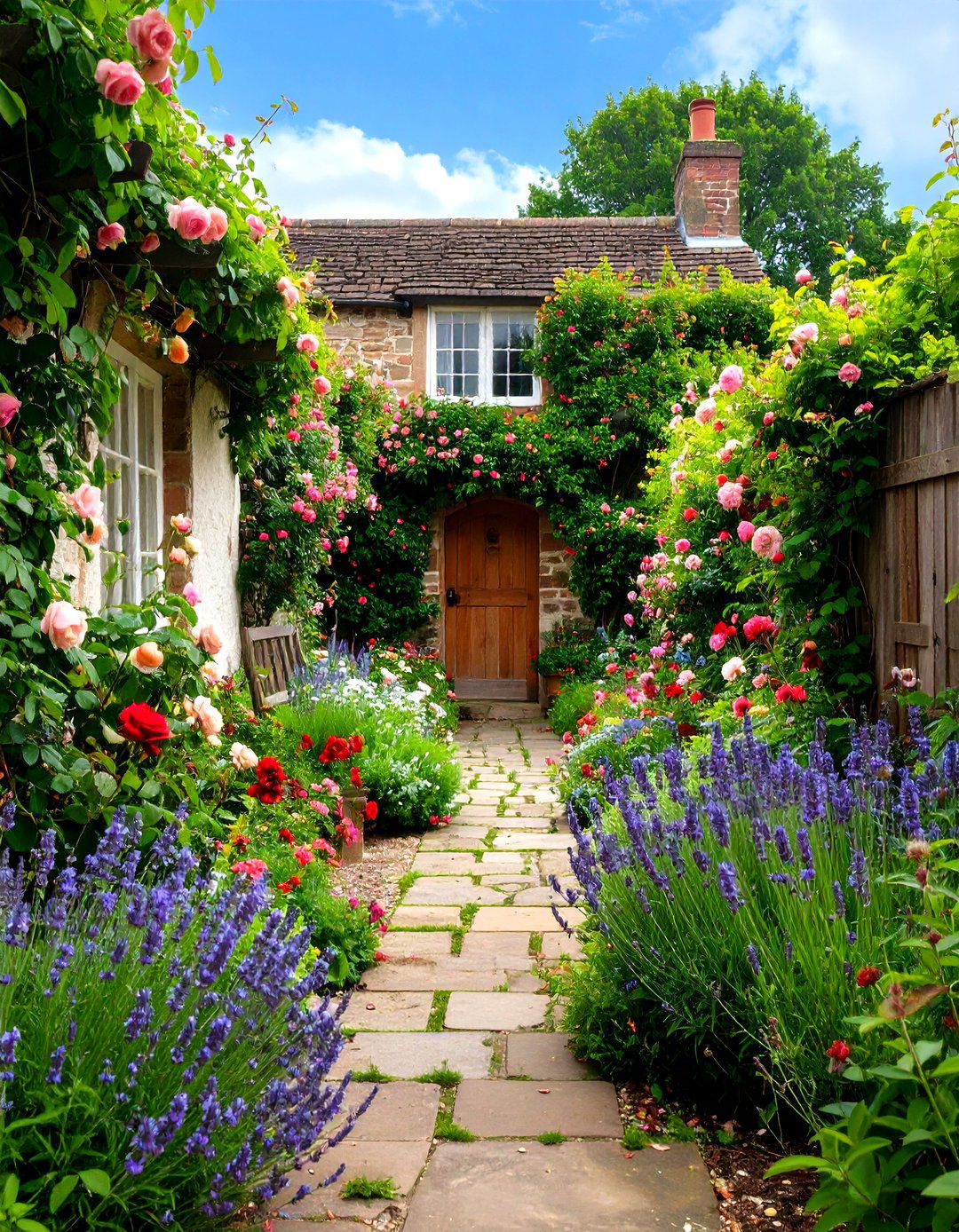
Nothing captures the essence of a cottage garden quite like an abundant collection of old-fashioned roses. These romantic blooms serve as the backbone of traditional cottage garden design, offering intoxicating fragrance and continuous color throughout the growing season. Choose varieties like climbing roses for arbors and fences, shrub roses for structural elements, and rambling roses that cascade naturally over walls and pergolas. Combine different rose types including David Austin varieties, knock-out roses for low maintenance, and heritage varieties that have been cherished for generations. Plant roses alongside complementary cottage garden flowers such as lavender, catmint, and hardy geraniums to create layered textures and extend the blooming period while providing natural pest control through companion planting techniques.
2. Cottage Garden Herb and Vegetable Integration
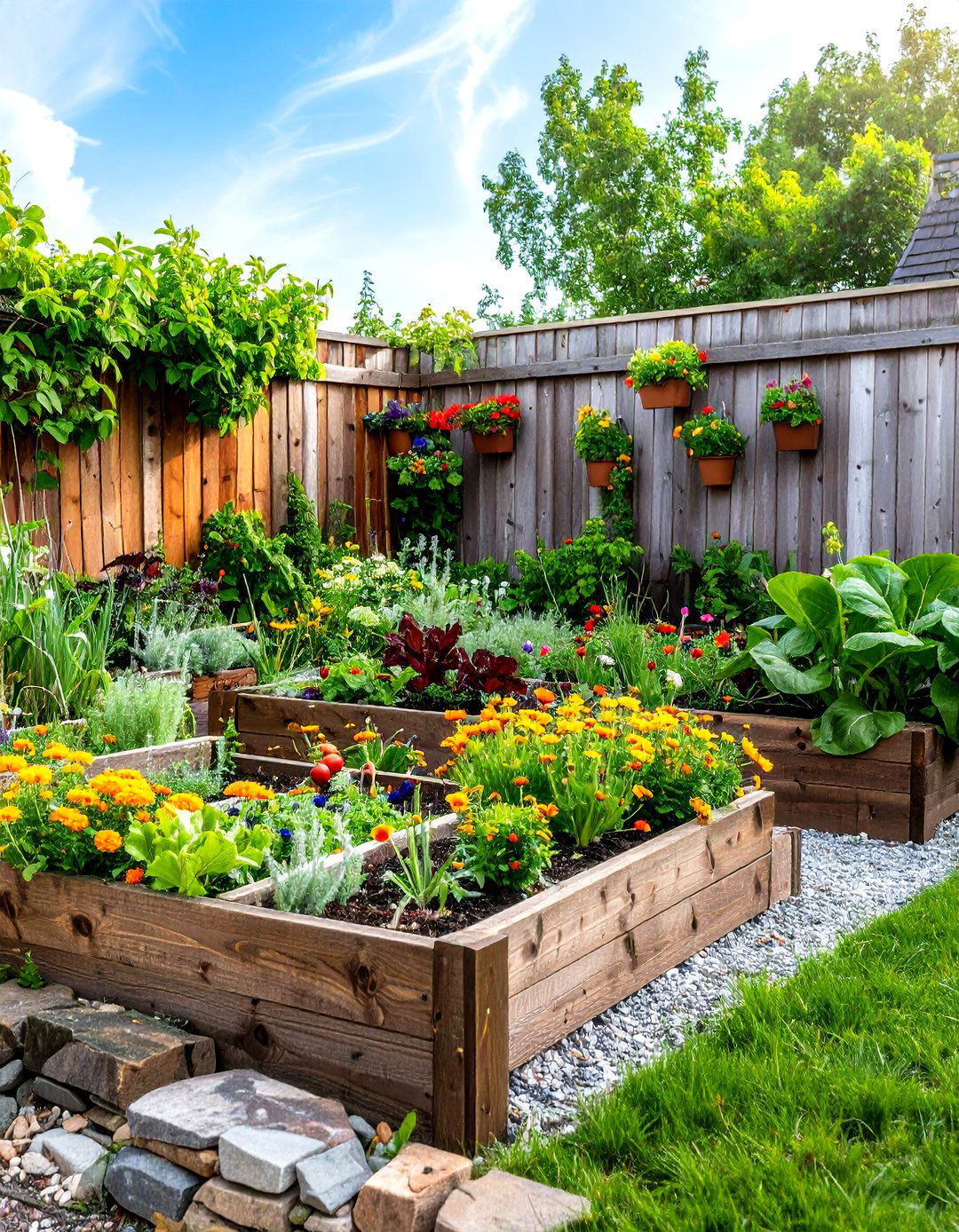
Transform your cottage garden into a productive paradise by seamlessly blending edible plants with ornamental flowers. This approach honors the original cottage garden tradition where practicality met beauty in small rural spaces. Incorporate herbs like thyme, sage, rosemary, and chives alongside vegetables such as kale, beans, cherry tomatoes, and ornamental cabbages. Create raised beds using natural materials like stone or weathered wood to define growing areas while maintaining the informal cottage garden aesthetic. Plant culinary herbs near pathways where their fragrances can be enjoyed during evening strolls, and allow some vegetables like purple-topped turnips and rainbow chard to showcase their ornamental qualities. Mix edible flowers such as nasturtiums, pansies, and calendulas throughout the space to blur the lines between practical and purely decorative elements.
3. Cottage Garden Climbing Plant Displays
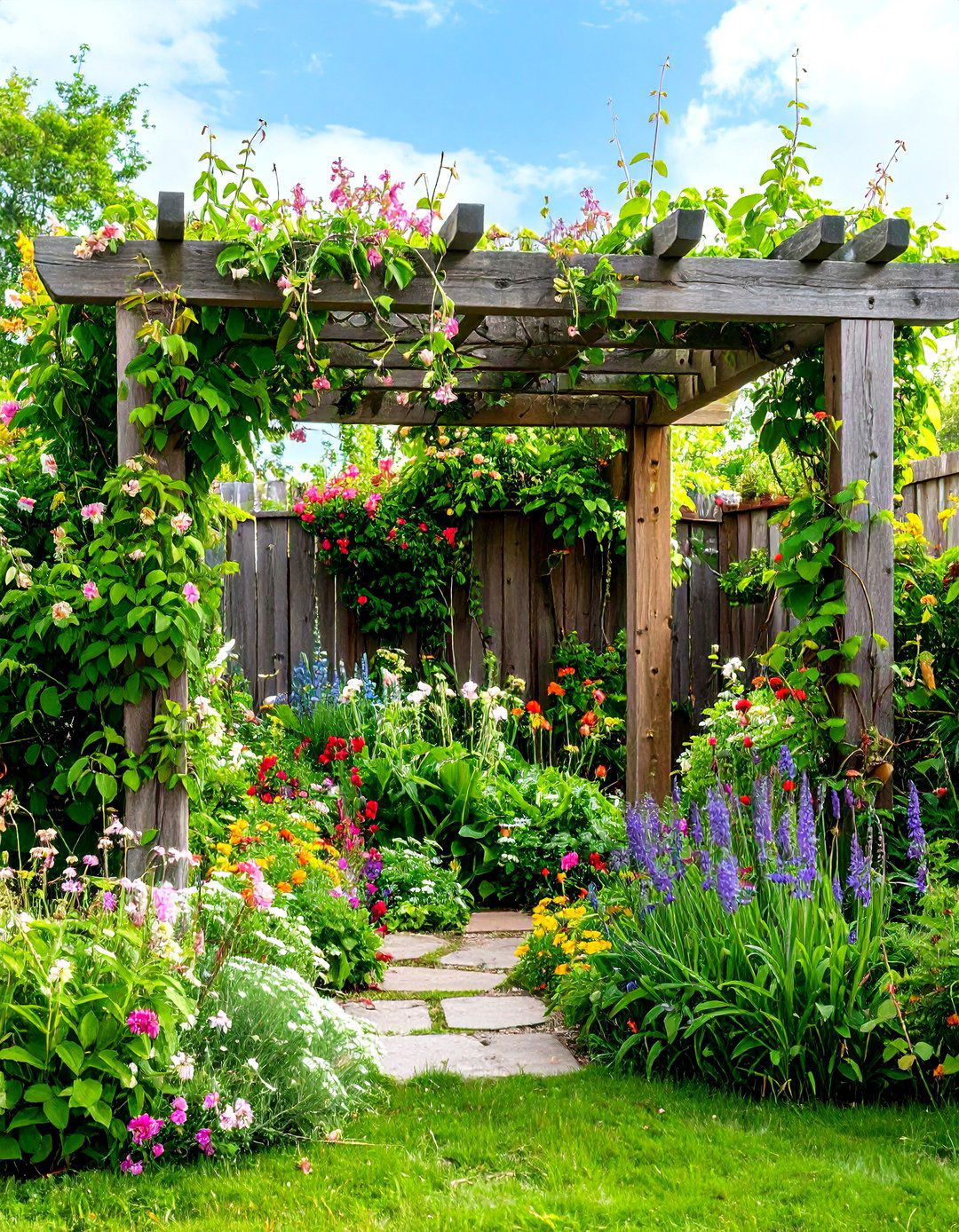
Vertical elements bring essential height and structure to cottage garden designs while maximizing growing space in compact areas. Create stunning displays using climbing plants such as clematis, honeysuckle, sweet peas, and morning glories that scramble up trellises, arbors, and fences. Install rustic wooden or metal supports that weather naturally and blend with the informal cottage garden style. Combine different climbing plants with varying bloom times to ensure continuous color from spring through fall. Consider native climbing varieties like American groundnut or wild grape for wildlife habitat, or choose fragrant options like jasmine and climbing roses for evening gardens. Train climbers over pergolas to create shaded seating areas, or allow them to soften harsh architectural lines while providing natural privacy screening.
4. Cottage Garden Pathway and Walkway Designs
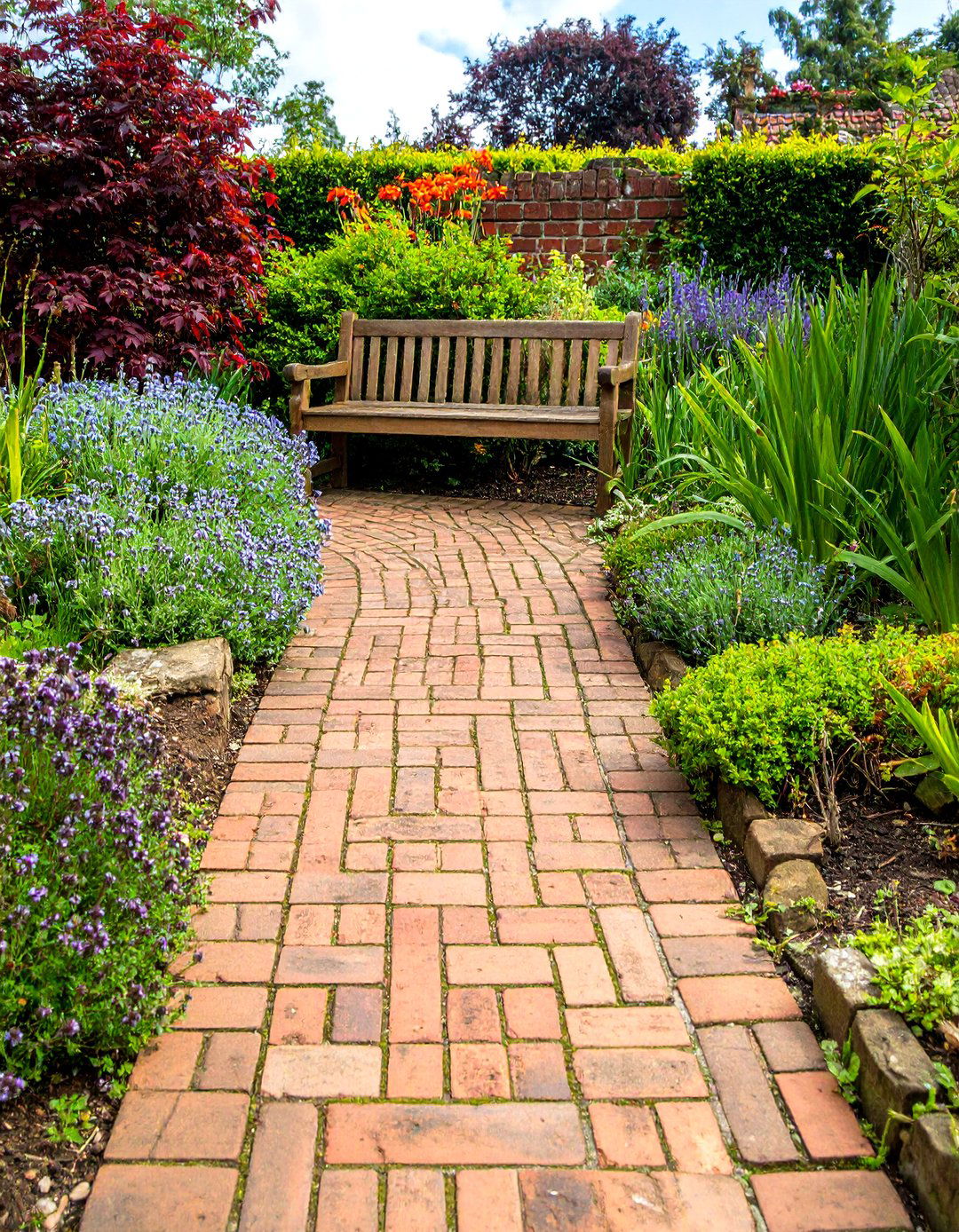
Meandering pathways are fundamental cottage garden elements that invite exploration while providing practical access to planted areas. Design curved, informal walkways using materials like weathered brick, natural stone, gravel, or bark chips that complement the rustic cottage garden aesthetic. Create stepping stone paths through densely planted borders, allowing plants to spill naturally onto the walkway edges for that characteristic cottage garden informality. Line pathways with low-growing plants such as creeping thyme, lady's mantle, or sweet alyssum that release fragrance when walked upon. Incorporate gentle curves that lead to focal points like garden benches, water features, or specimen plants. Use different pathway materials to define various garden zones while maintaining visual continuity throughout the cottage garden space.
5. Cottage Garden Fence and Boundary Features
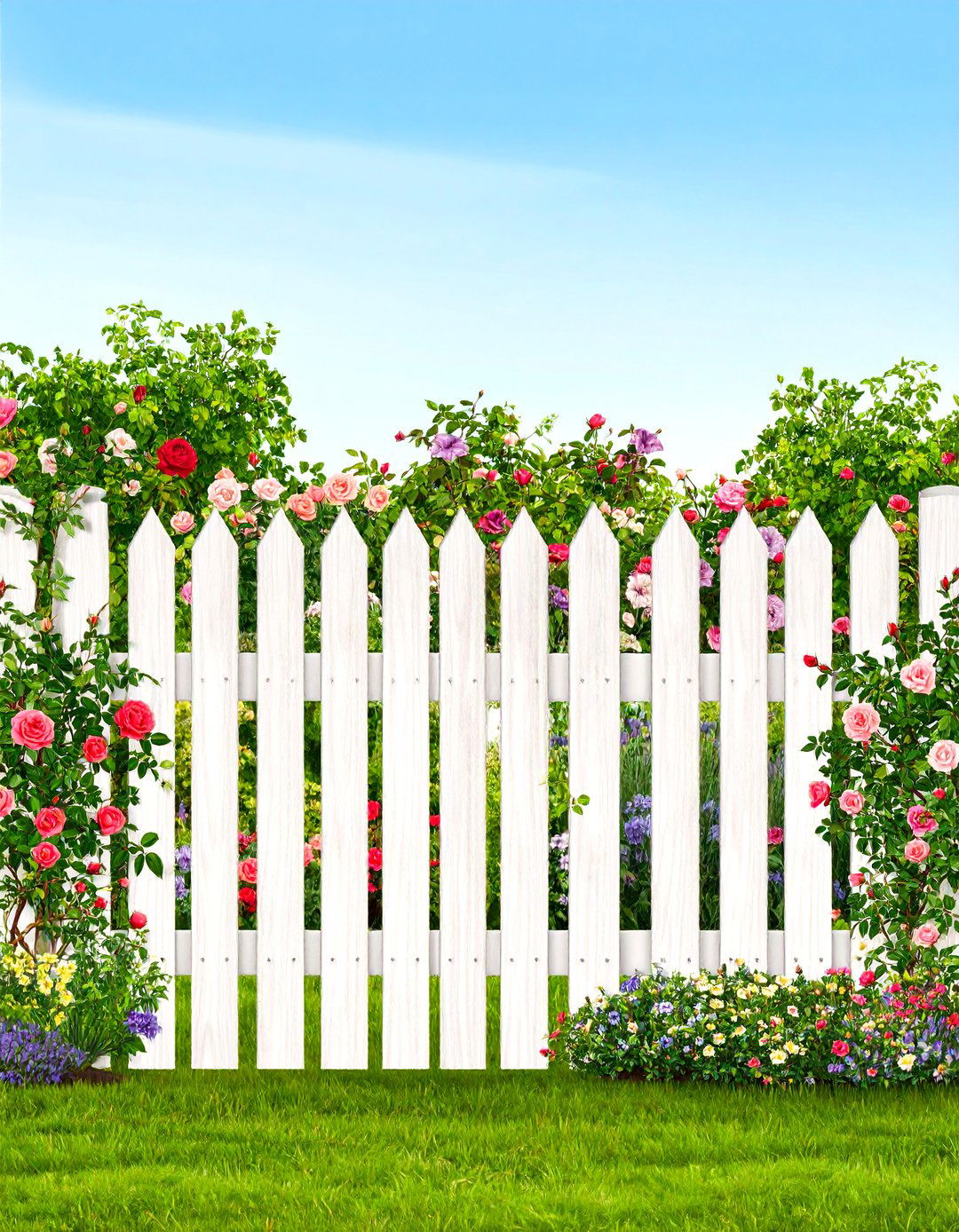
Traditional cottage garden fences serve both practical and aesthetic purposes while supporting climbing plants and defining garden spaces. Install classic white picket fences, weathered wooden boundaries, or rustic split-rail designs that provide structure without overwhelming the informal cottage garden plantings. Use fences as vertical growing supports for climbing roses, clematis, or espaliered fruit trees that add productive beauty to boundary lines. Create gaps or openings in fencing to maintain views and encourage wildlife movement throughout the cottage garden ecosystem. Consider lower fence heights that allow plants to cascade gracefully while still providing necessary boundaries. Add gates with vintage hardware or salvaged materials that enhance the cottage garden's nostalgic charm while providing practical access to different garden areas.
6. Cottage Garden Water Feature Integration
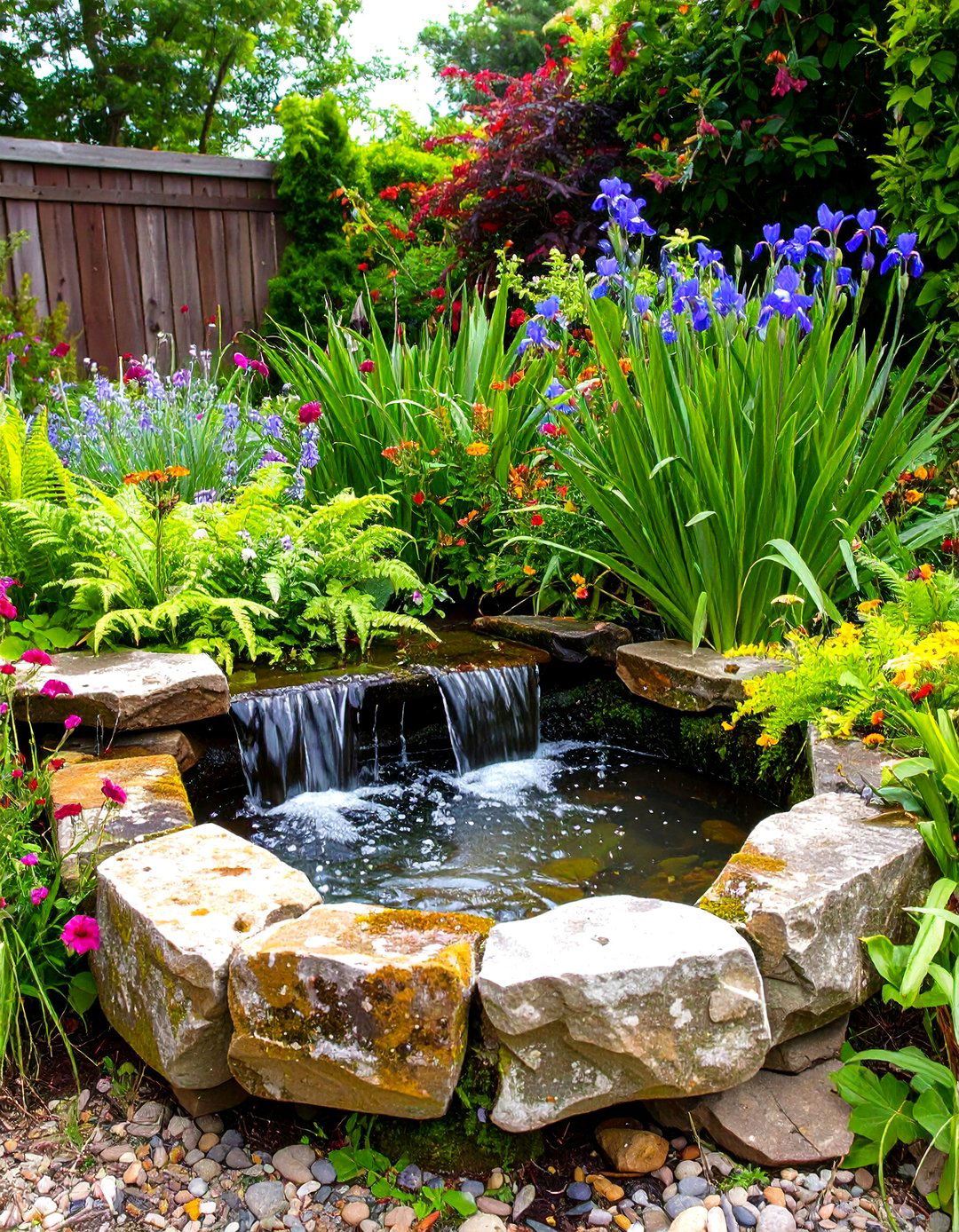
Water elements bring movement, sound, and wildlife habitat to cottage garden designs while creating peaceful focal points for relaxation and contemplation. Install simple features like weathered stone troughs, reclaimed barrels, or small ponds that blend naturally with the informal cottage garden style. Choose materials that age gracefully and develop patina over time, avoiding contemporary designs that clash with traditional cottage garden aesthetics. Surround water features with moisture-loving plants such as astilbe, iris, and ferns that thrive in the humid microclimate. Include shallow areas or ramps for wildlife access, encouraging birds, butterflies, and beneficial insects to visit your cottage garden. Consider adding a small fountain or bubbler for gentle water movement that masks nearby noise while creating a soothing atmosphere throughout the garden space.
7. Cottage Garden Seasonal Color Planning

Strategic plant selection ensures continuous color and interest throughout all seasons in your cottage garden design. Plan spring displays with bulbs like daffodils, tulips, and crocuses planted among emerging perennials and early-blooming shrubs such as forsythia and flowering quince. Summer abundance comes from classic cottage garden plants including delphiniums, phlox, bee balm, and annual flowers like cosmos and zinnias. Extend autumn interest with late-blooming perennials such as asters, chrysanthemums, and sedum while incorporating plants with colorful foliage like burning bush and ornamental grasses. Winter structure comes from evergreen shrubs, dried seed heads left standing, and plants with interesting bark or berries. Create succession plantings of annuals to maintain continuous bloom, and choose perennials with extended flowering periods to maximize seasonal cottage garden impact.
8. Cottage Garden Wildlife and Pollinator Habitats

Design your cottage garden as a haven for beneficial wildlife by selecting plants that provide food, shelter, and nesting sites for various creatures. Choose native flowering plants such as purple coneflower, black-eyed Susan, and wild bergamot that support local pollinator populations while maintaining cottage garden charm. Create habitat diversity with different plant heights and structures, from ground-covering wildflowers to tall sunflowers and shrubs. Install bee houses, butterfly puddling stations, and bird feeders that complement the cottage garden aesthetic while supporting wildlife needs. Avoid chemical pesticides and embrace natural pest control methods that maintain the ecological balance. Leave some areas slightly wild with brush piles or native grasses where beneficial insects can overwinter, and choose plants with seeds and berries that provide autumn and winter food sources for birds.
9. Cottage Garden Container and Raised Bed Arrangements
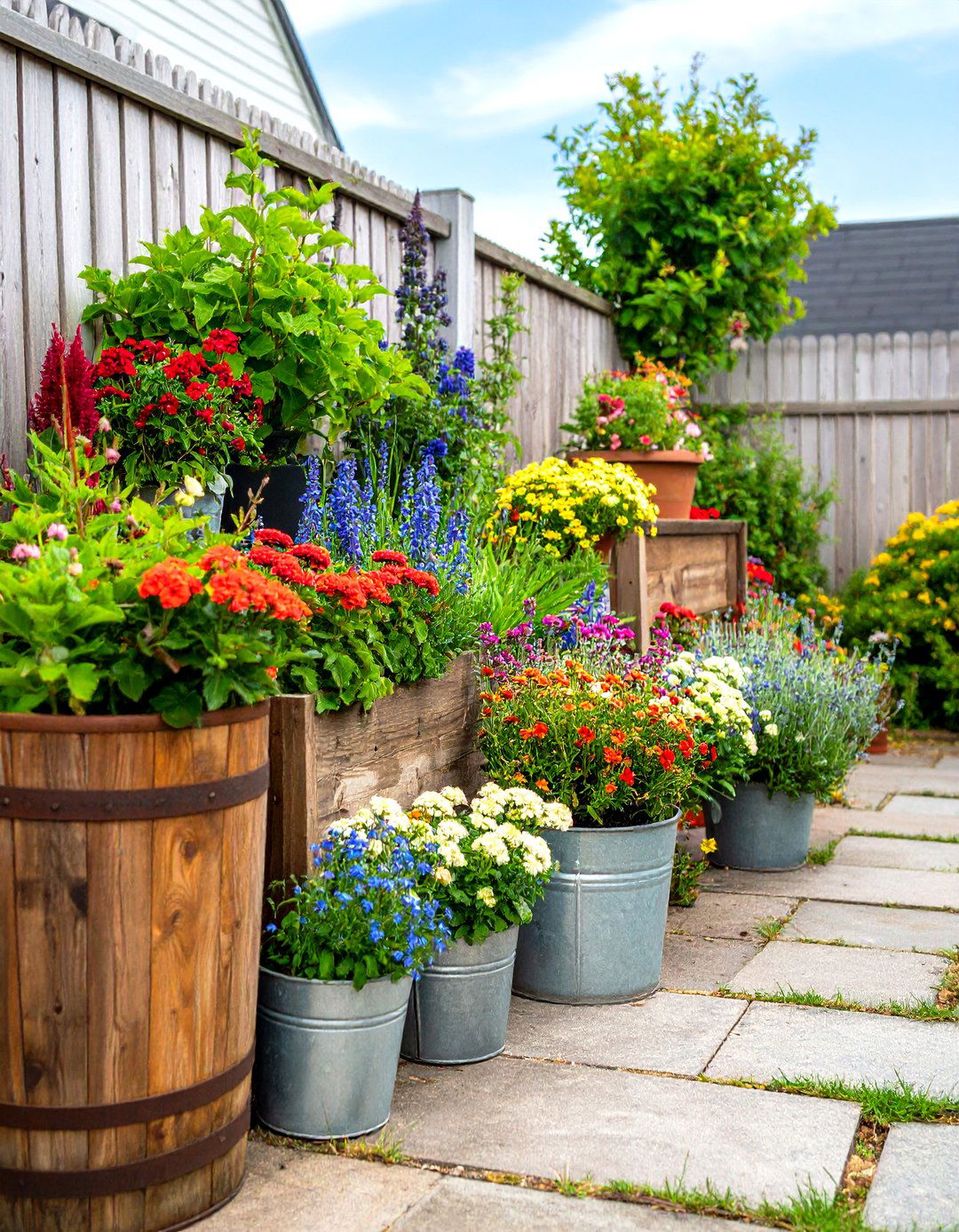
Containers and raised beds offer flexibility and improved growing conditions while adding structural elements to cottage garden designs. Use weathered wooden planters, galvanized metal tubs, or repurposed items like wheelbarrows and watering troughs that enhance the cottage garden's vintage appeal. Group containers of varying heights and sizes to create dynamic displays that can be rearranged seasonally or moved for optimal growing conditions. Fill raised beds with rich, organic soil that supports the dense plantings characteristic of cottage garden style. Use natural materials like stone, brick, or reclaimed wood for raised bed construction that weathers beautifully and complements informal cottage garden aesthetics. Plant containers with seasonal combinations that provide continuous color, and use them to define pathways or create focal points throughout the garden space.
10. Cottage Garden Fragrant Plant Combinations
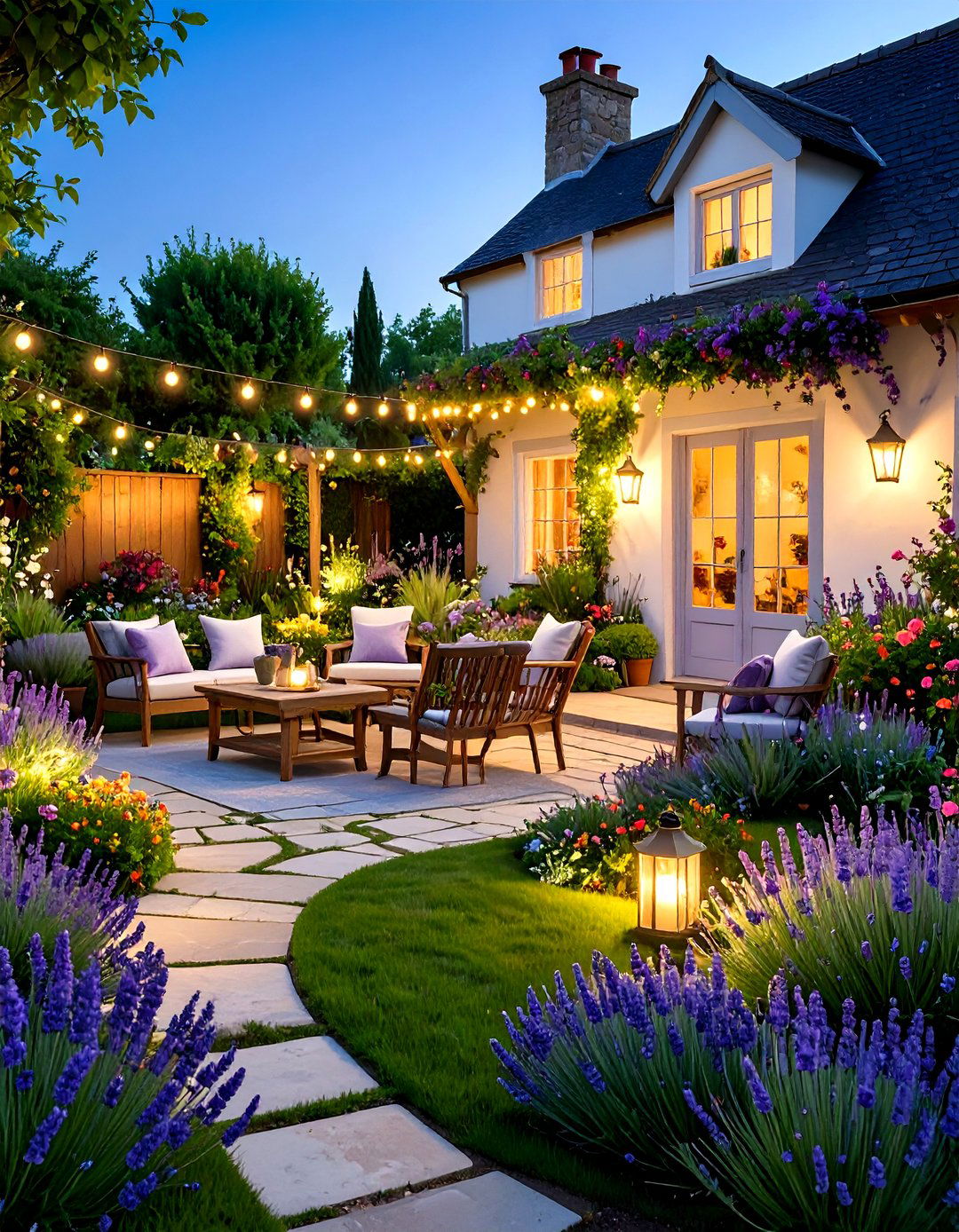
Scent is an essential element of cottage garden design that engages the senses and creates memorable garden experiences. Plant fragrant flowers such as sweet peas, stocks, and night-scented flowers near seating areas and along pathways where their perfumes can be fully appreciated. Combine aromatic herbs like lavender, rosemary, and mint throughout cottage garden borders to release fragrance when brushed against during garden maintenance. Choose roses specifically for their scent, including old garden varieties and modern cultivars bred for fragrance rather than just visual appeal. Plant evening-scented flowers such as four o'clocks, moonflower, and night-blooming cereus near windows or outdoor entertaining areas. Create fragrant ground covers using creeping thyme or chamomile that release scent when walked upon, and position fragrant shrubs like lilac and mock orange where their seasonal blooms can perfume entire cottage garden areas.
11. Cottage Garden Self-Seeding Plant Communities
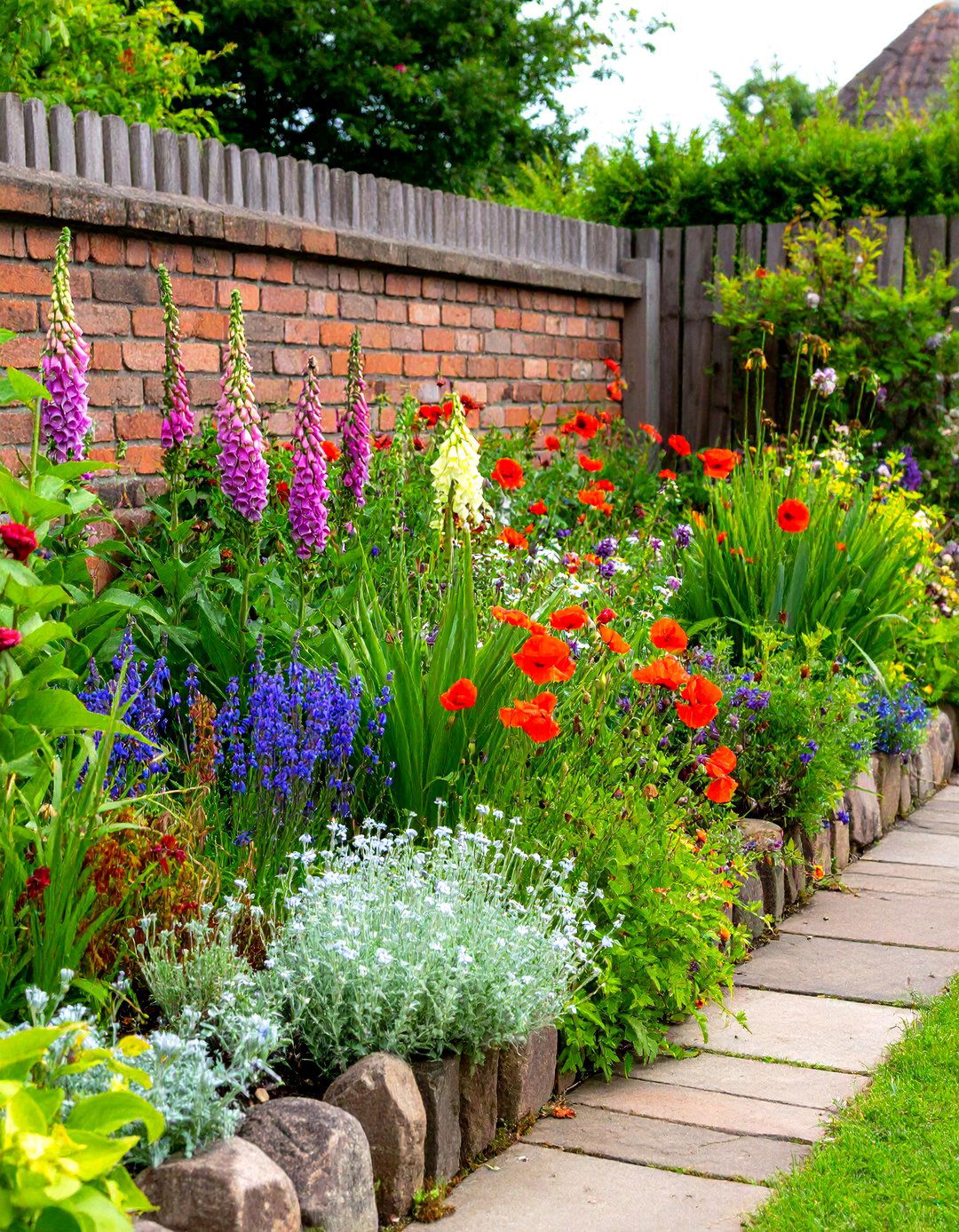
Embrace the natural cottage garden characteristic of plants that freely self-seed and create spontaneous color combinations throughout the garden space. Choose plants like foxgloves, aquilegias, and annual poppies that readily produce offspring in unexpected locations, adding to the cottage garden's informal charm. Allow these volunteer seedlings to establish where conditions suit them, creating natural plant communities that require minimal maintenance while providing continuous surprises. Include biennials such as hollyhocks and sweet rocket that complete their life cycle over two years, ensuring ongoing plant succession. Combine self-seeding annuals like calendulas, nigella, and borage with established perennials to create ever-changing cottage garden compositions. Learn to recognize desirable seedlings versus weeds, and selectively edit volunteer plants to maintain garden balance while preserving the cottage garden's spontaneous character.
12. Cottage Garden Vintage and Antique Accents
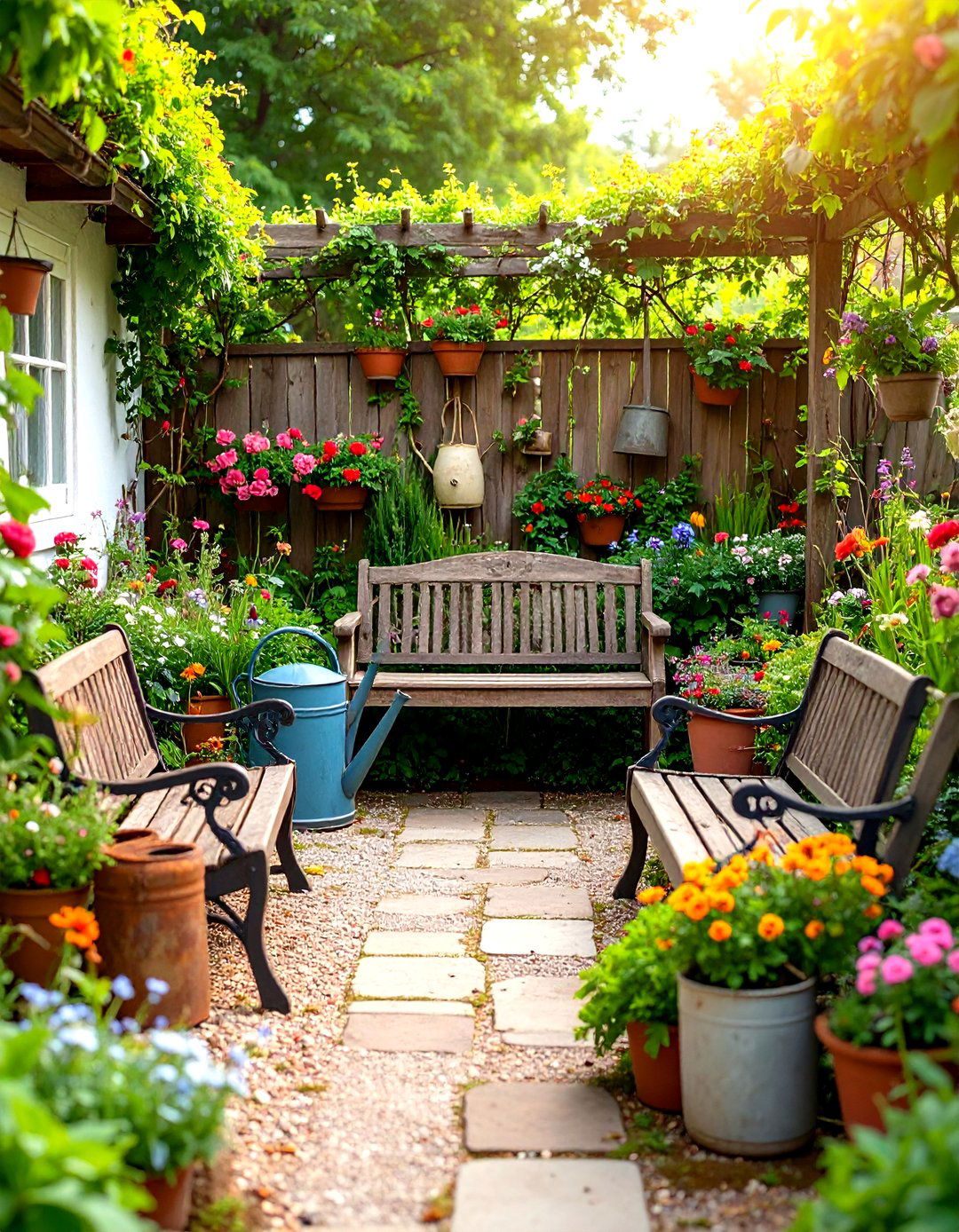
Incorporate authentic vintage elements that enhance the nostalgic charm and historical character of cottage garden designs. Hunt for weathered garden tools, old watering cans, and vintage plant markers at flea markets and estate sales to create authentic cottage garden vignettes. Use antique or reproduction gates, arbors, and trellises that show appropriate aging and patina rather than pristine new materials. Repurpose items like old wheelbarrows, milk cans, and wooden crates as unique planters that add cottage garden personality while providing functional growing space. Include vintage-style garden furniture such as cast iron benches or painted wooden chairs that invite relaxation and contemplation. Create focal points using architectural salvage like old windows, doors, or decorative ironwork that tells a story while supporting climbing plants or framing garden views.
13. Cottage Garden Shade and Partial Sun Adaptations
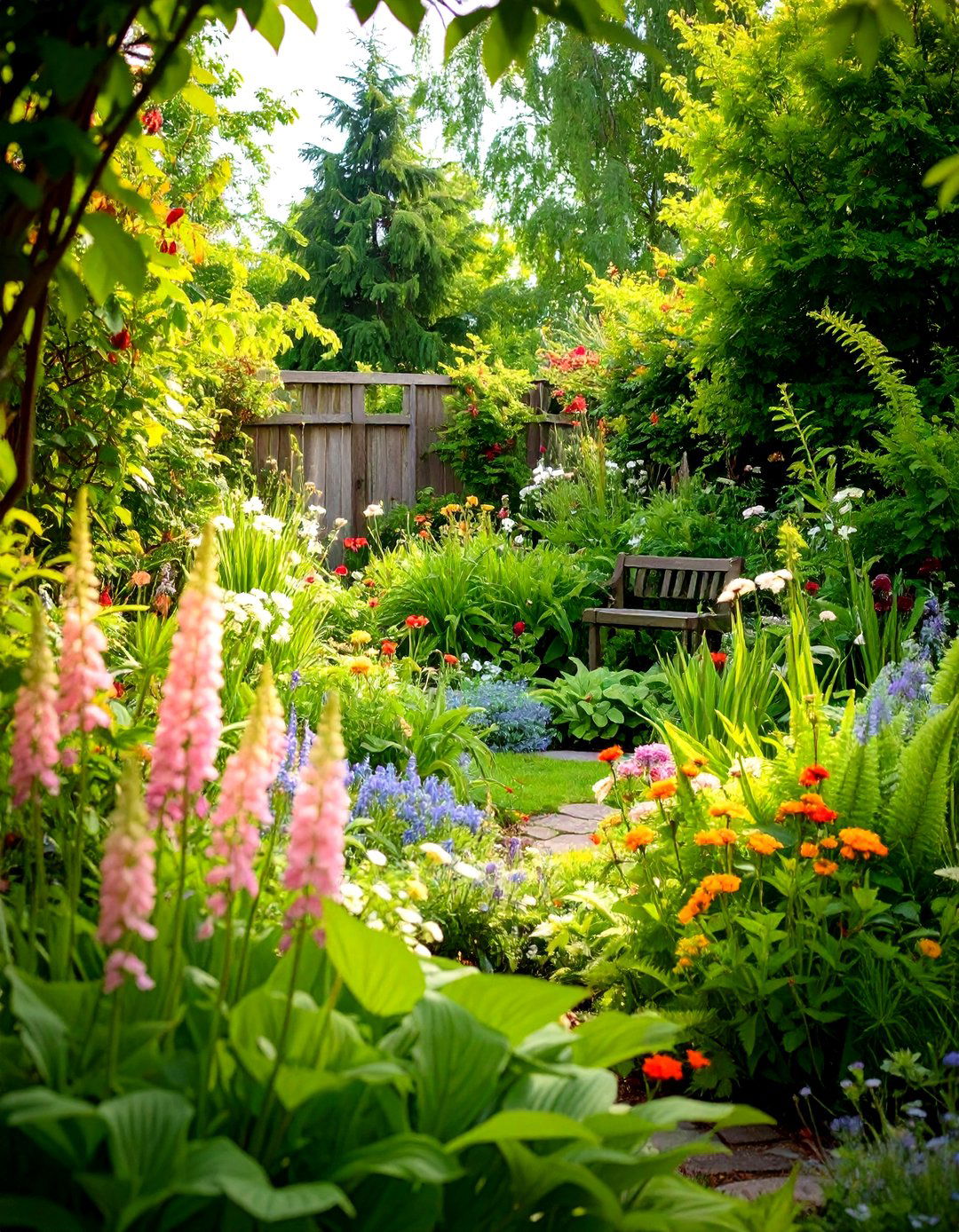
Design successful cottage garden areas in less-than-ideal light conditions by selecting appropriate plants and adapting traditional cottage garden principles to shaded environments. Choose shade-tolerant flowering plants such as astilbe, coral bells, and bleeding heart that provide cottage garden color without requiring full sun exposure. Incorporate woodland plants like hostas, ferns, and wild ginger that create lush foliage textures characteristic of cottage garden abundance. Use light-colored flowers and variegated foliage to brighten shaded cottage garden areas, and select plants with extended bloom periods to maximize seasonal interest. Create layered plantings with canopy trees, understory shrubs, and ground-level perennials that mimic natural woodland communities. Include shade-tolerant herbs like mint, parsley, and chives to maintain the cottage garden tradition of mixing edible and ornamental plants even in challenging light conditions.
14. Cottage Garden Cutting and Bouquet Gardens
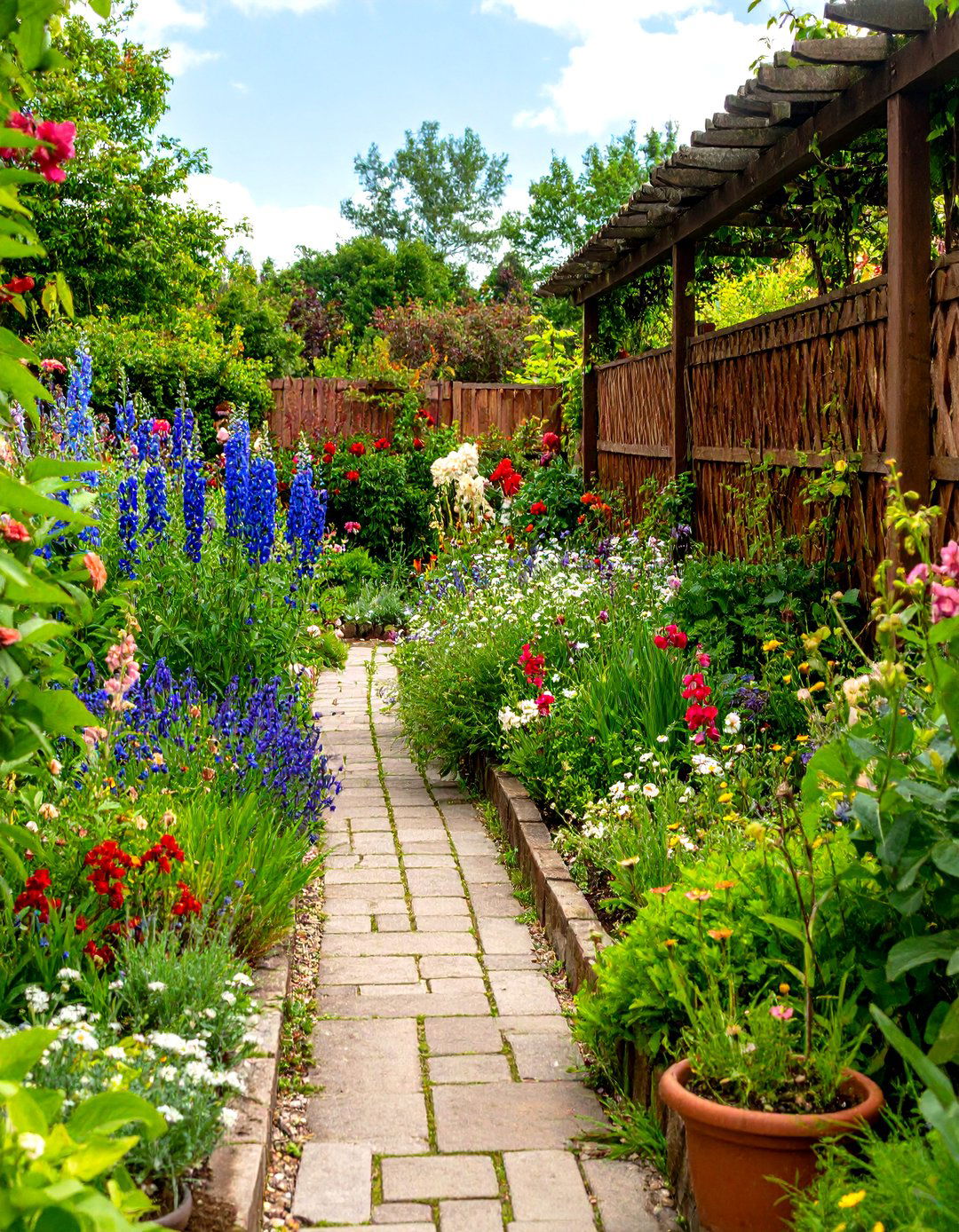
Dedicate portions of your cottage garden specifically for growing flowers intended for indoor arrangements and seasonal bouquets. Plant traditional cutting flowers such as sweet peas, delphiniums, and peonies in dedicated rows or beds where they can be harvested without affecting the overall cottage garden display. Choose varieties bred specifically for cutting that offer long stems, good vase life, and continuous production throughout the growing season. Include foliage plants like eucalyptus, dusty miller, and ornamental grasses that provide structure and texture for floral arrangements. Plant cutting gardens in convenient locations with easy access and good drainage that supports vigorous plant growth. Succession plant annuals like zinnias, cosmos, and sunflowers to ensure continuous availability of fresh blooms throughout the cottage garden growing season.
15. Cottage Garden Drought-Tolerant Plant Selections

Create resilient cottage garden designs that thrive with minimal water inputs by choosing plants adapted to dry conditions while maintaining traditional cottage garden aesthetics. Select drought-tolerant perennials such as lavender, Russian sage, and sedums that provide cottage garden color and texture without requiring supplemental irrigation. Incorporate native plants that naturally thrive in your climate conditions and support local wildlife while reducing maintenance requirements. Use mulching techniques with organic materials to conserve soil moisture and suppress weeds in cottage garden plantings. Group plants with similar water requirements together to maximize irrigation efficiency and plant health. Choose Mediterranean-style herbs like oregano, thyme, and rosemary that add cottage garden fragrance and culinary value while tolerating dry conditions. Design cottage garden areas with improved drainage and soil amendments that support drought-tolerant plant communities.
16. Cottage Garden Small Space and Urban Adaptations
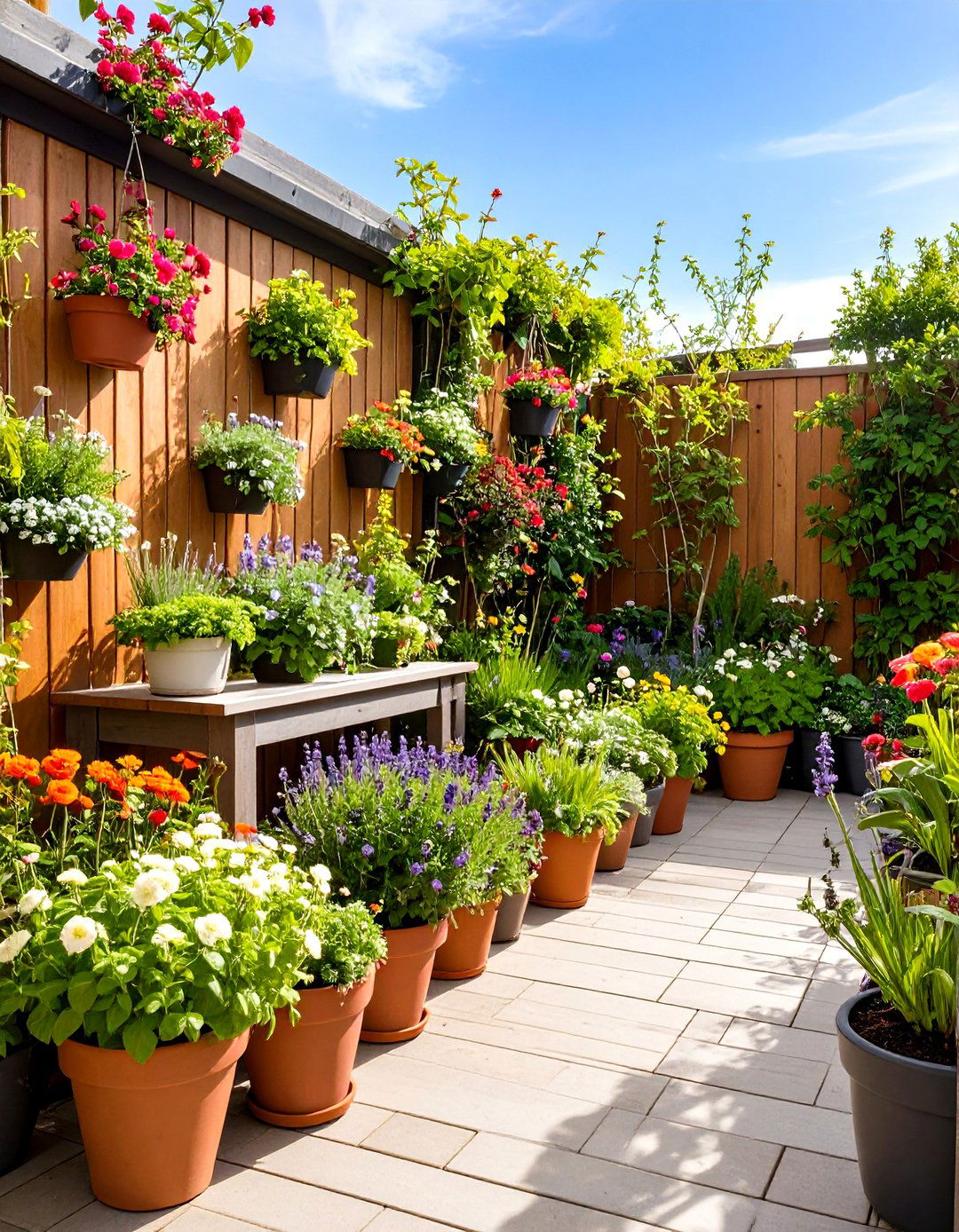
Adapt cottage garden principles to small urban spaces, balconies, and courtyard gardens through creative design and plant selection strategies. Use vertical growing techniques with trellises, wall-mounted planters, and hanging baskets to maximize growing space while maintaining cottage garden abundance. Choose compact varieties of traditional cottage garden plants that provide full-size beauty in smaller packages suitable for confined spaces. Create cottage garden vignettes using containers that can be rearranged seasonally and moved as needed for optimal growing conditions. Incorporate mirrors, light-colored surfaces, and strategic plant placement to create the illusion of larger garden spaces. Select plants that serve multiple purposes, such as edible flowers and aromatic herbs that provide cottage garden charm while offering practical benefits. Use folding or space-saving garden furniture that maintains cottage garden style while accommodating small space limitations.
17. Cottage Garden Ground Cover and Lawn Alternatives

Replace traditional lawn areas with cottage garden ground covers that provide continuous interest while reducing maintenance requirements and supporting sustainable gardening practices. Plant creeping varieties such as wild strawberry, ajuga, and creeping phlox that form dense mats while offering seasonal flowers and foliage interest. Create cottage garden meadow areas using native grasses and wildflowers that support local wildlife while requiring minimal inputs once established. Use stepping stones or narrow paths to provide access through ground cover plantings without compacting the soil or damaging plants. Choose ground covers appropriate for foot traffic levels, using more durable options like creeping thyme in high-use areas and delicate varieties in display-only cottage garden sections. Combine different ground cover plants to create textural variety and extend seasonal interest throughout cottage garden spaces.
18. Cottage Garden Evening and Night Gardens
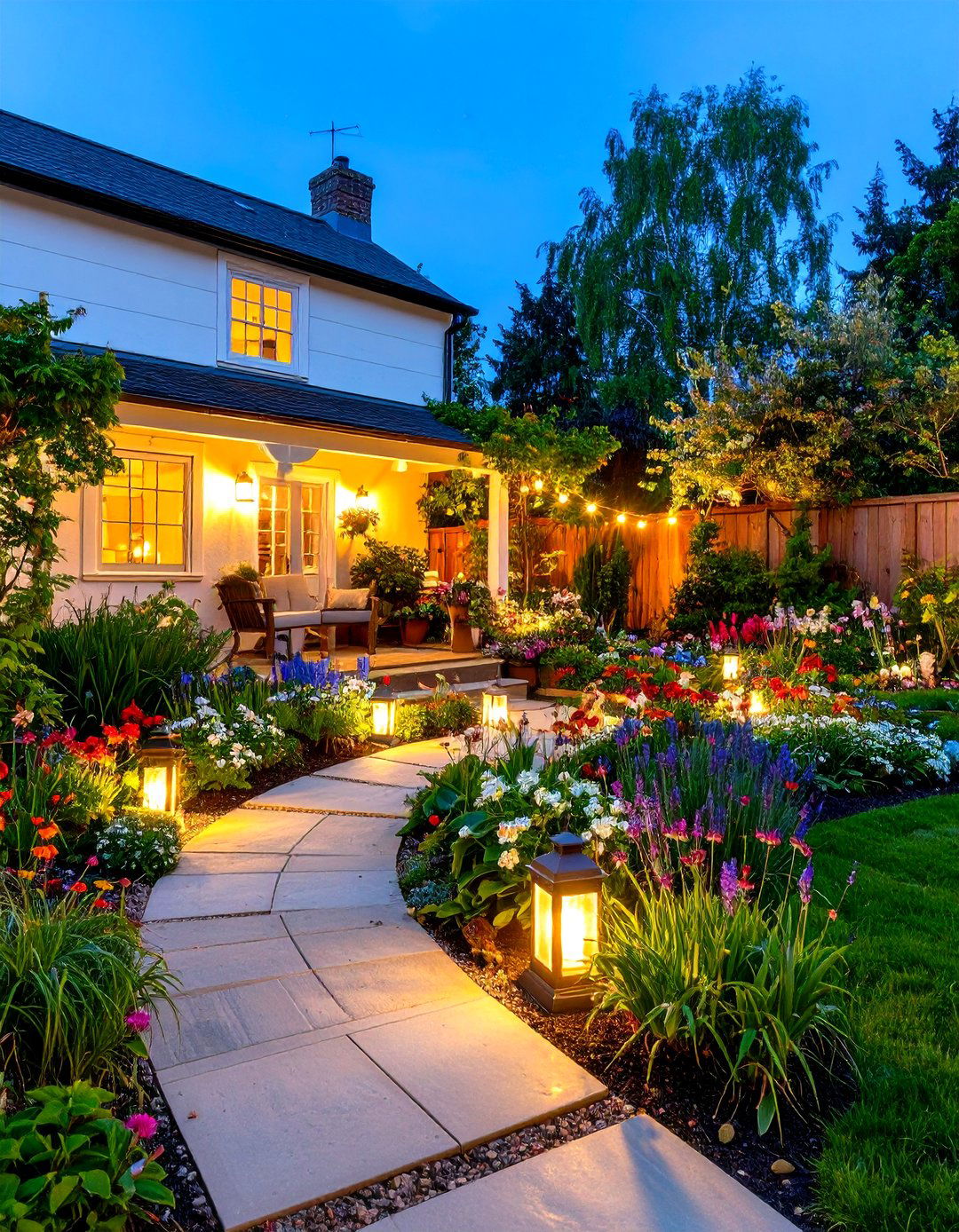
Design cottage garden areas specifically for evening enjoyment by selecting plants that come alive after dark and incorporating lighting elements that enhance nighttime garden experiences. Plant white and pale-colored flowers such as moonflower, four o'clocks, and white varieties of traditional cottage garden plants that glow in moonlight and low light conditions. Include night-blooming plants like evening primrose and night-scented stock that release their fragrances during evening hours when outdoor entertaining typically occurs. Add subtle lighting using solar fixtures, string lights, or lanterns that provide gentle illumination without overwhelming cottage garden plants or disrupting wildlife patterns. Position fragrant plants near seating areas where their scents can be enjoyed during evening relaxation, and choose plants that attract beneficial nighttime visitors like moths and evening pollinators.
19. Cottage Garden Winter Interest and Structure
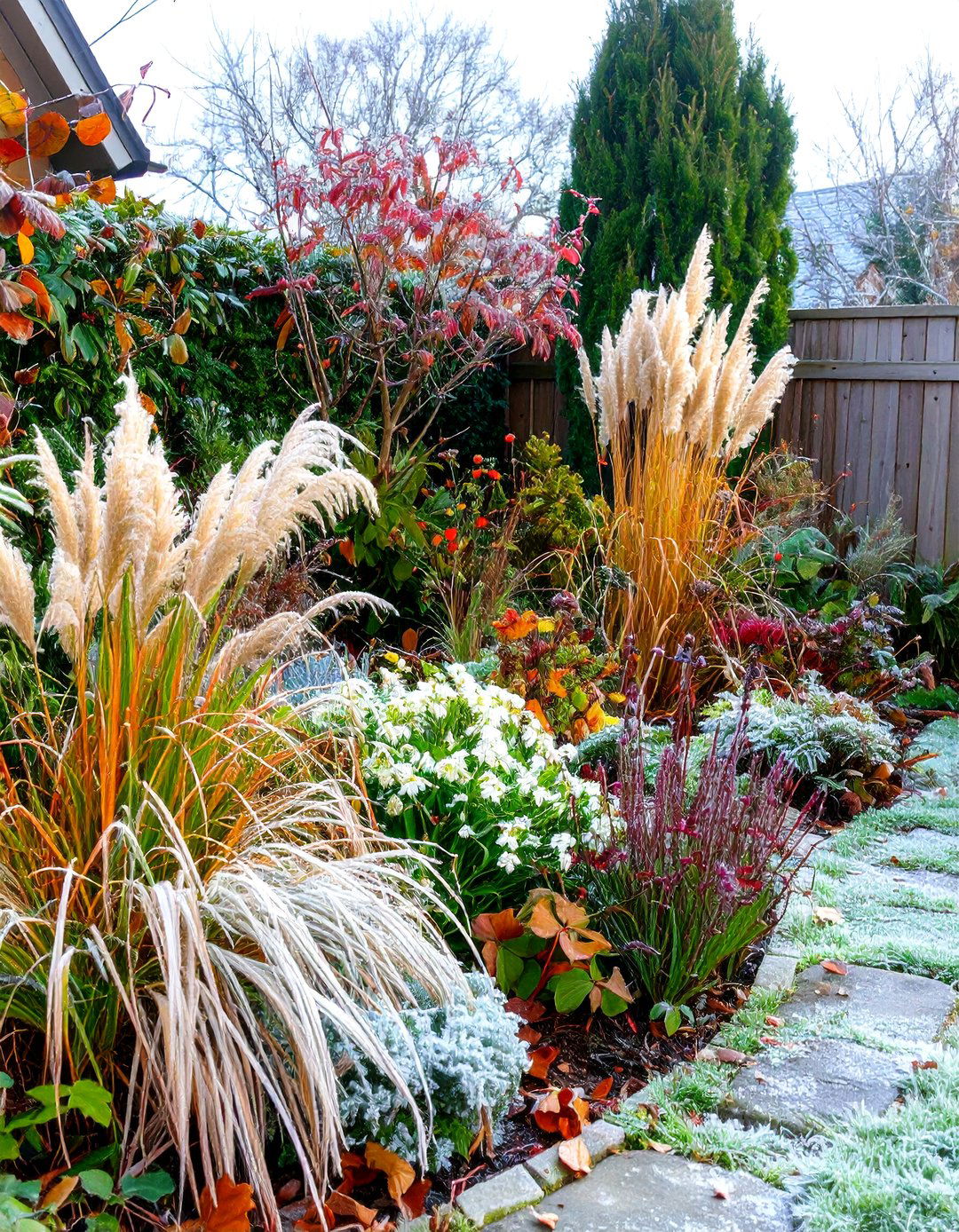
Plan cottage garden designs that provide visual interest and structure during dormant seasons through strategic plant selection and garden design elements. Choose plants with attractive winter characteristics such as ornamental grasses with persistent seed heads, shrubs with colorful bark, and perennials with interesting dried foliage. Include evergreen elements like boxwood, lavender, and ornamental conifers that provide cottage garden structure when deciduous plants are dormant. Allow seed heads from plants like echinacea, rudbeckia, and ornamental grasses to remain standing through winter to provide wildlife food and garden interest. Incorporate winter-blooming plants such as hellebores, witch hazel, and winter jasmine that provide unexpected cottage garden color during cold months. Use garden structures like arbors, trellises, and decorative fencing that become prominent features when not hidden by lush cottage garden vegetation.
20. Cottage Garden Maintenance and Seasonal Care

Develop sustainable maintenance routines that keep cottage garden plantings healthy and attractive while preserving their characteristic informal appearance and ecological benefits. Establish seasonal tasks including spring soil preparation, summer deadheading and watering, autumn cleanup and planting, and winter protection for tender cottage garden plants. Practice organic gardening methods using compost, natural pest control, and companion planting that support cottage garden ecosystem health without harmful chemical inputs. Learn to distinguish between beneficial volunteer seedlings and invasive weeds, selectively editing cottage garden plantings to maintain desired plant communities. Develop efficient watering systems using soaker hoses, drip irrigation, or rain collection that support cottage garden plants during dry periods. Create compost systems that recycle garden waste into valuable soil amendments, supporting the sustainable cottage garden practices that honor traditional gardening wisdom.
Conclusion:
Cottage garden ideas offer endless possibilities for creating beautiful, functional outdoor spaces that connect us with gardening traditions while supporting modern sustainable practices. These gardens succeed through their embrace of natural abundance, seasonal variety, and the harmonious combination of practical and ornamental elements. Whether working with expansive rural properties or compact urban spaces, cottage garden principles adapt beautifully to different settings and gardening experience levels. The key lies in understanding that cottage gardens celebrate controlled chaos, seasonal change, and the joy of gardening itself rather than pursuing perfection. Start small, choose plants you love, and allow your cottage garden to evolve naturally into a unique expression of your personal style and gardening passion.


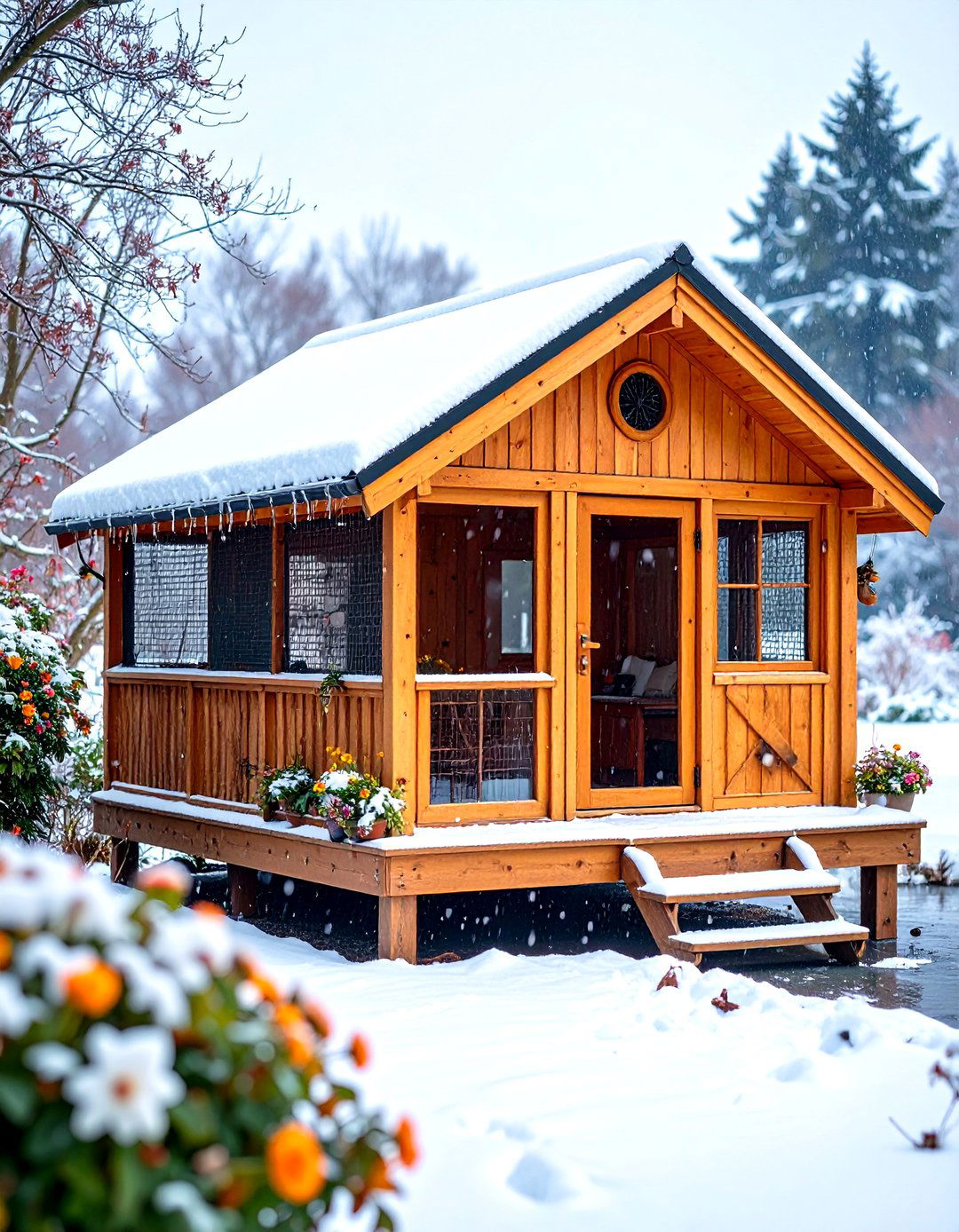
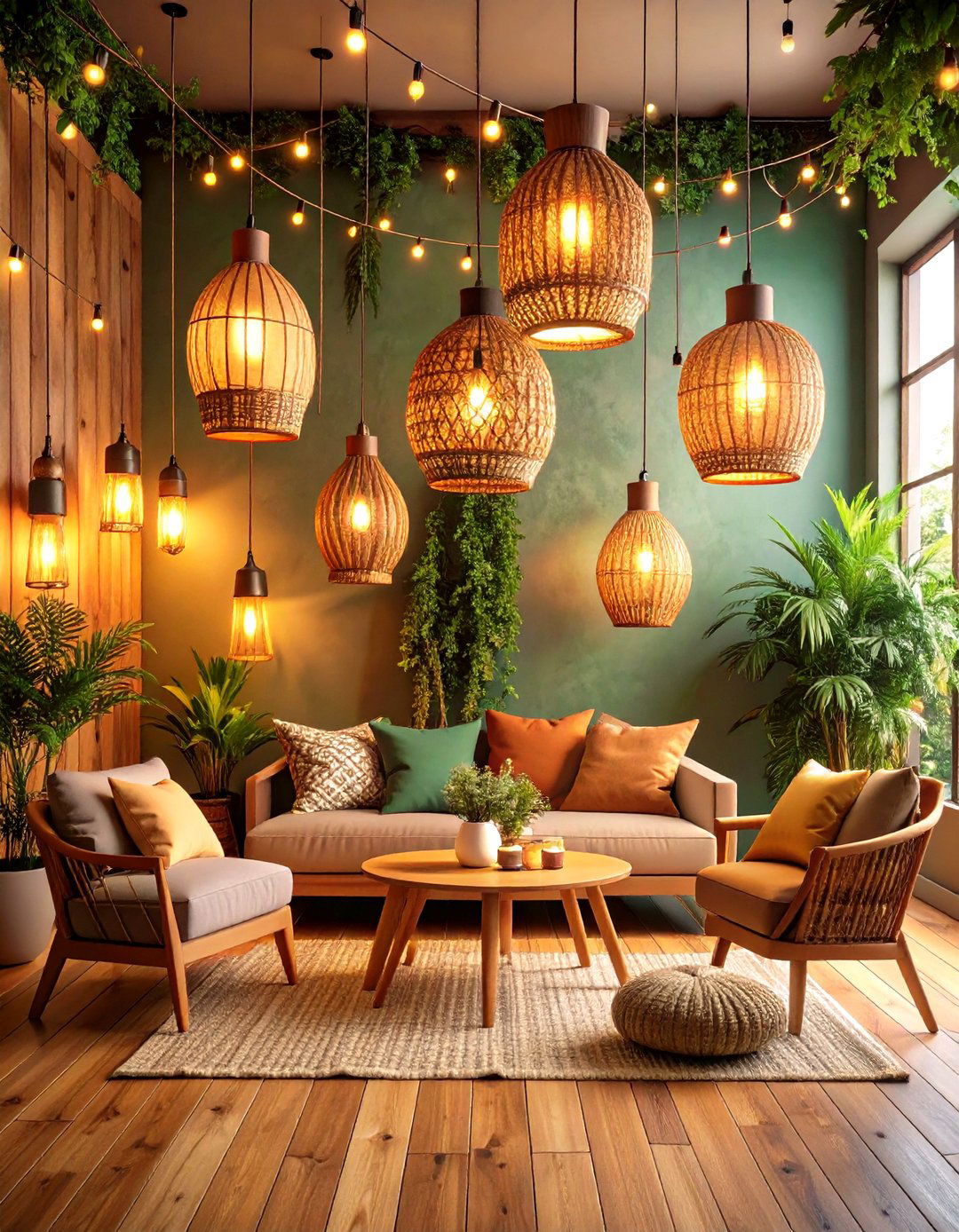
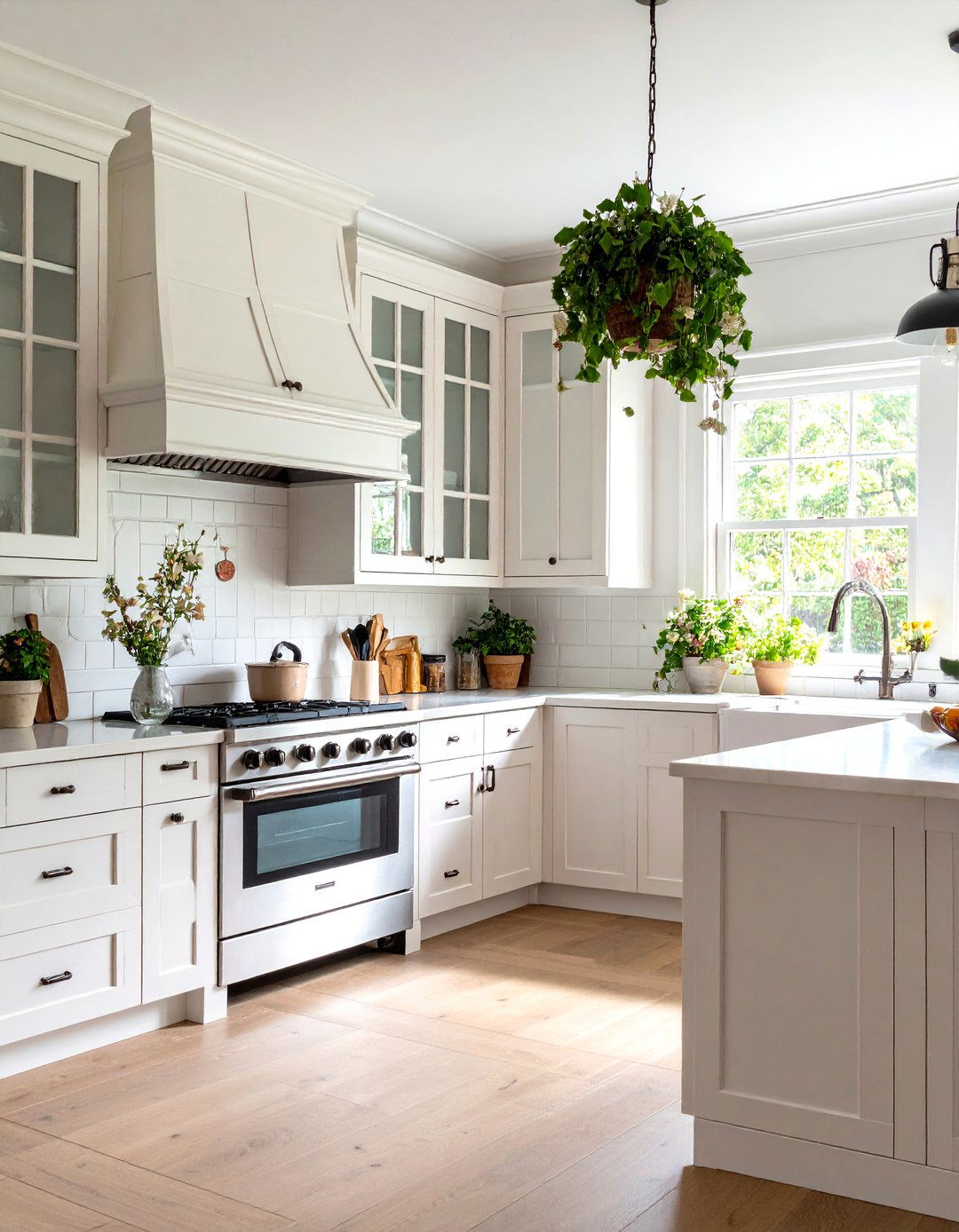
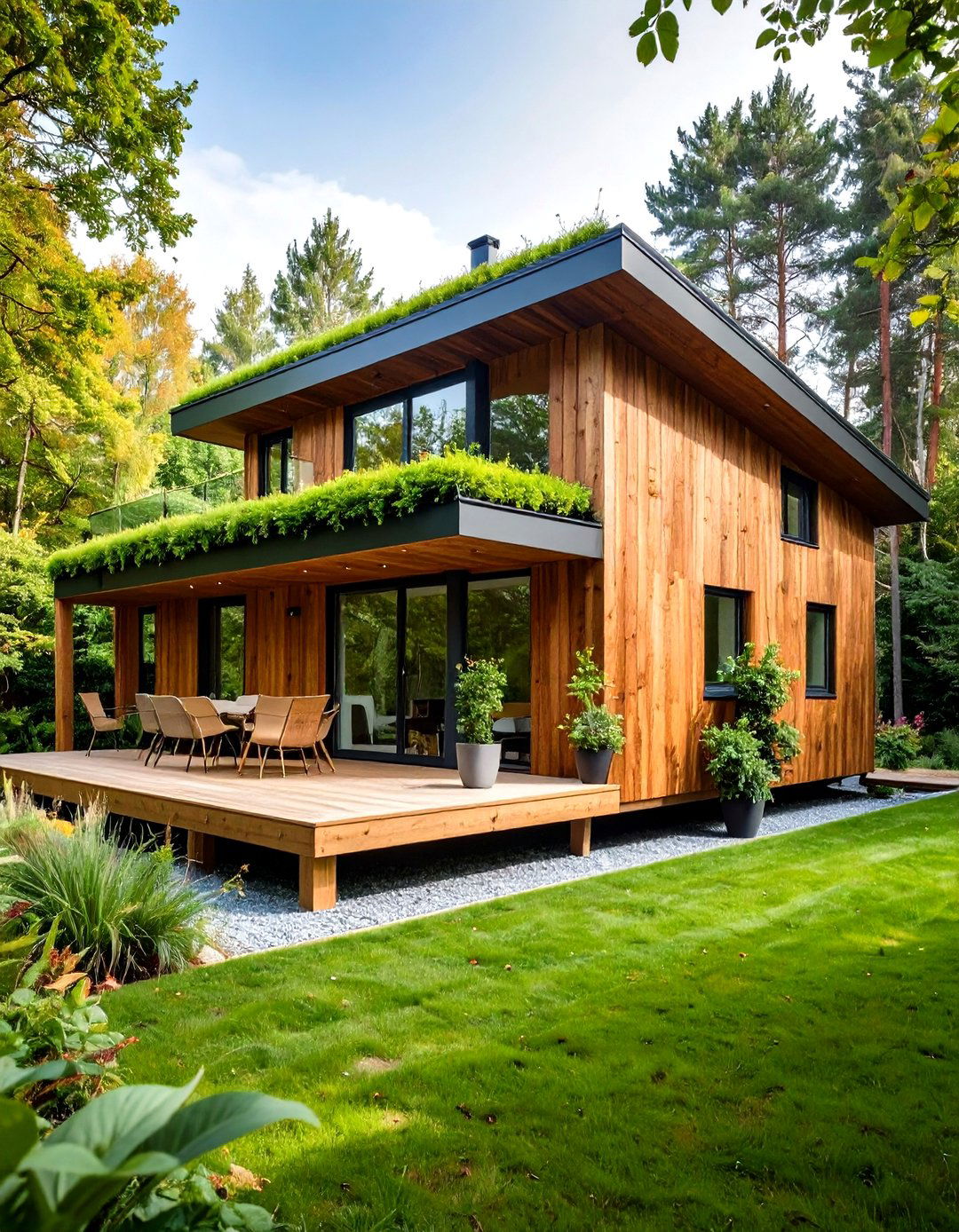

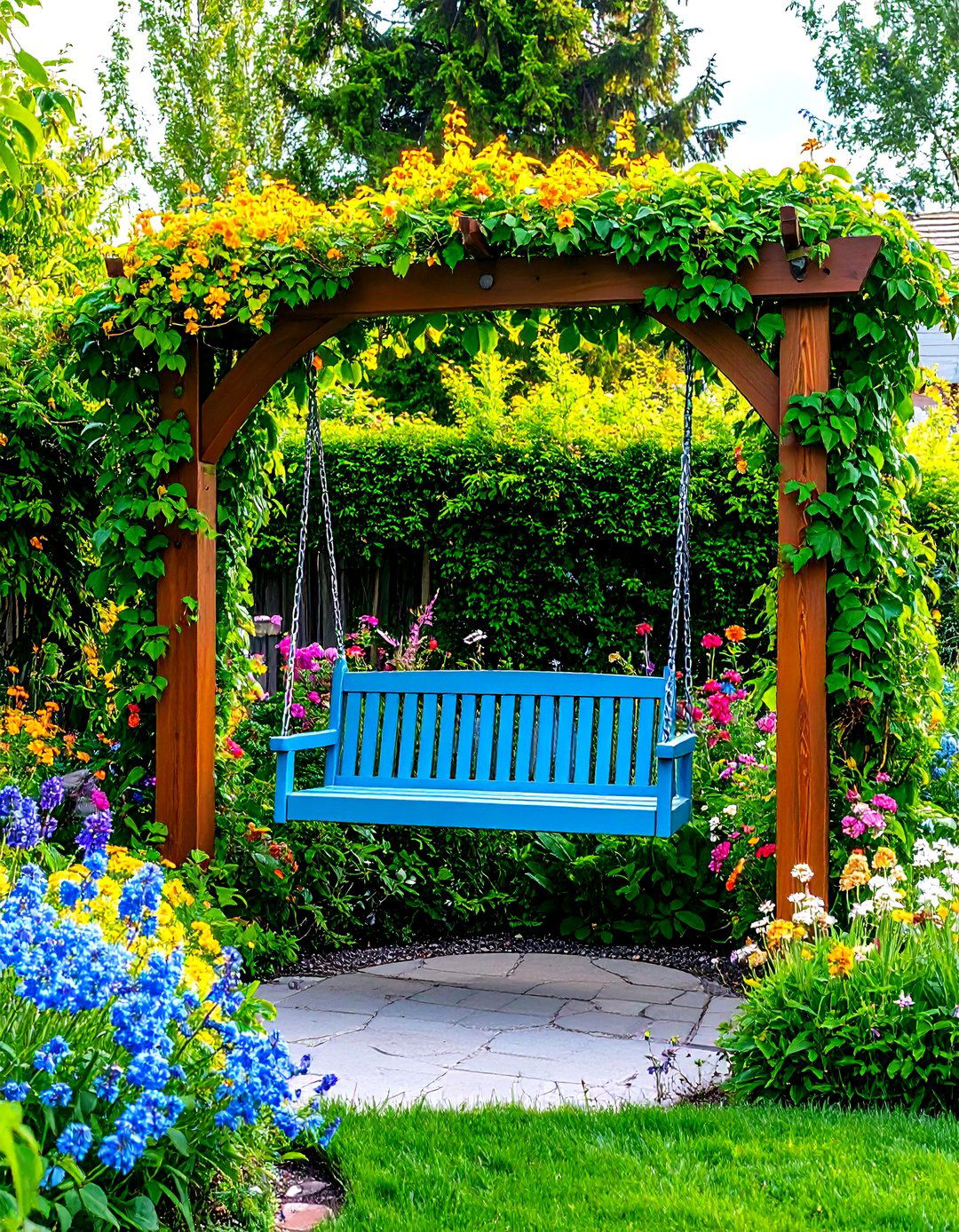
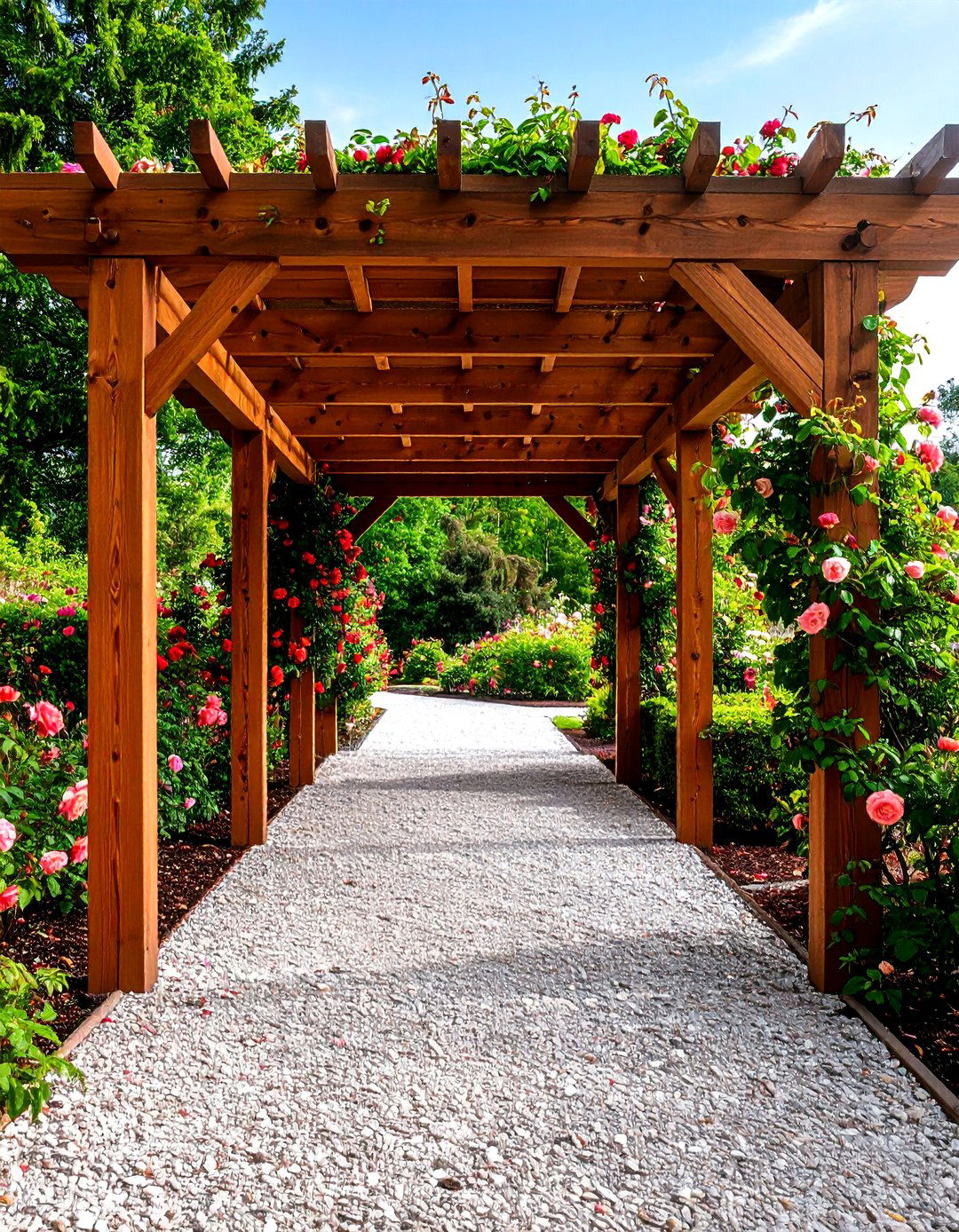

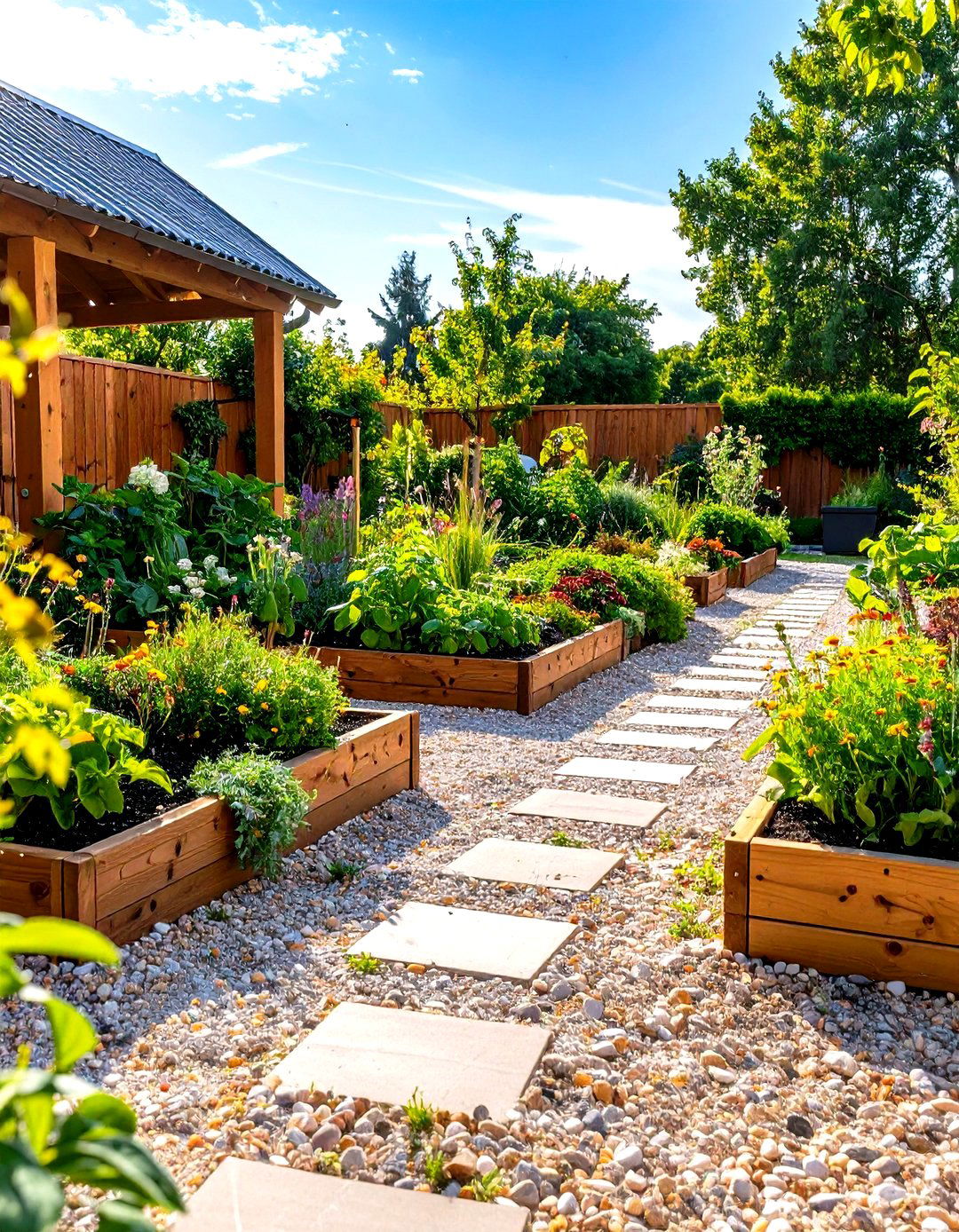
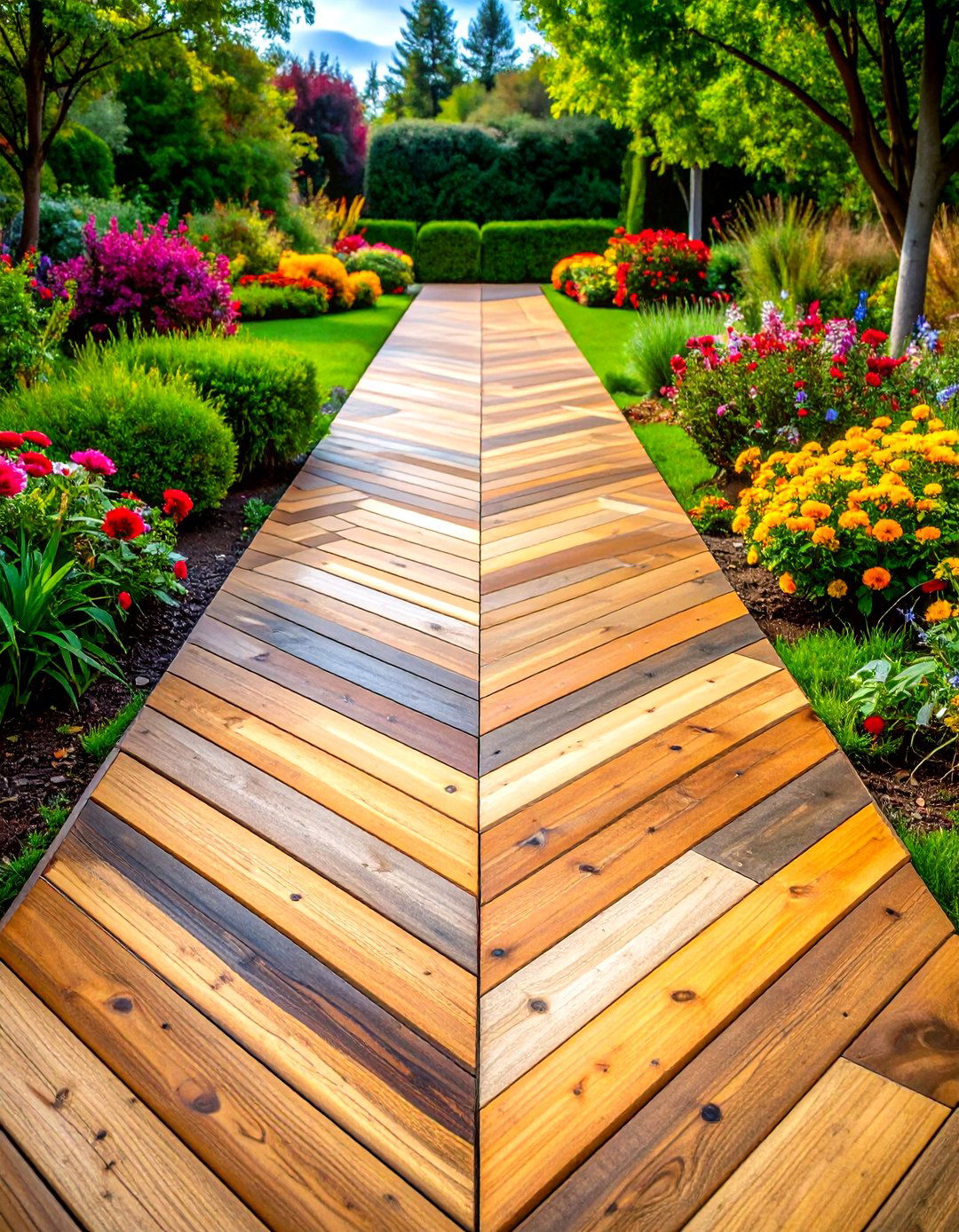
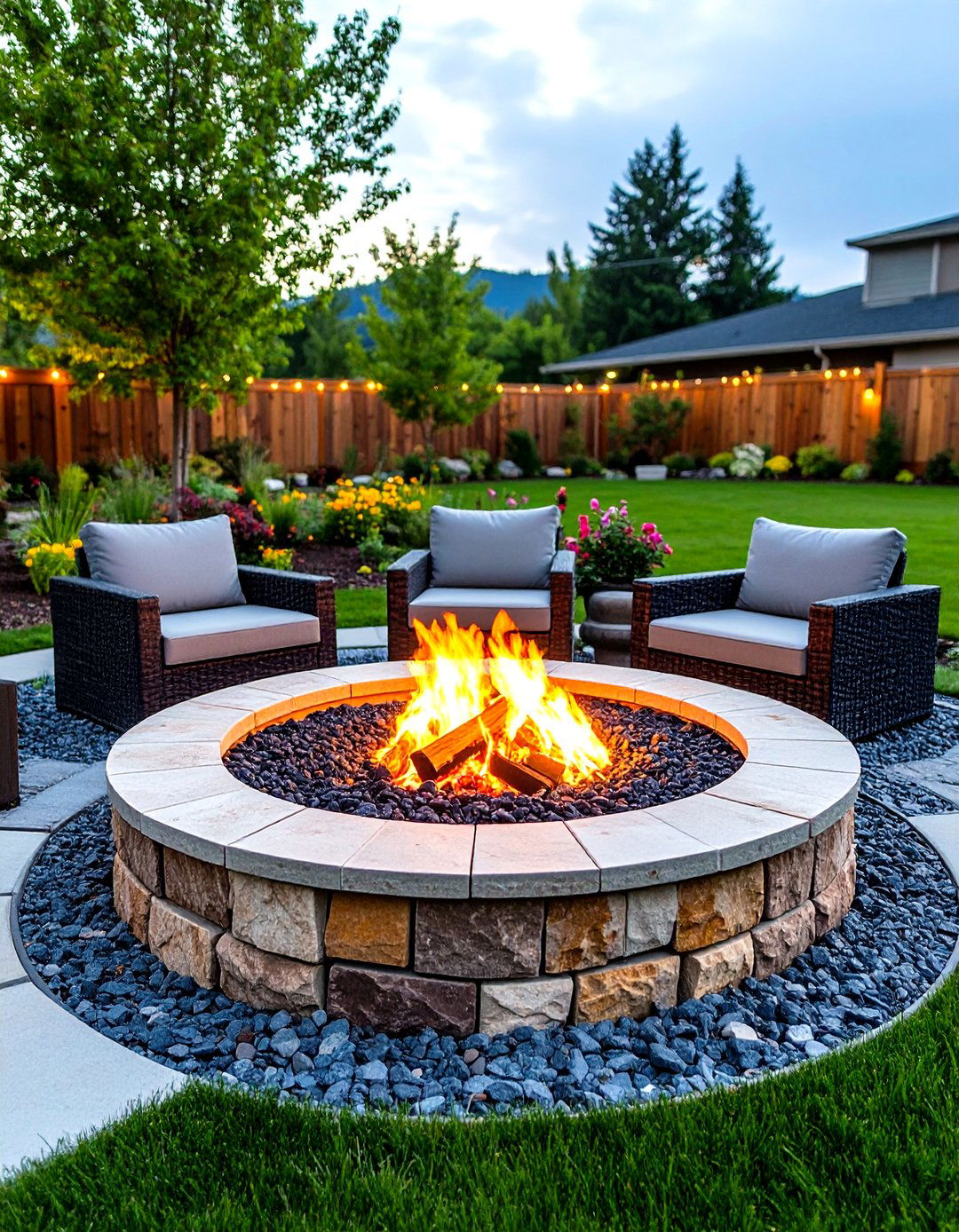
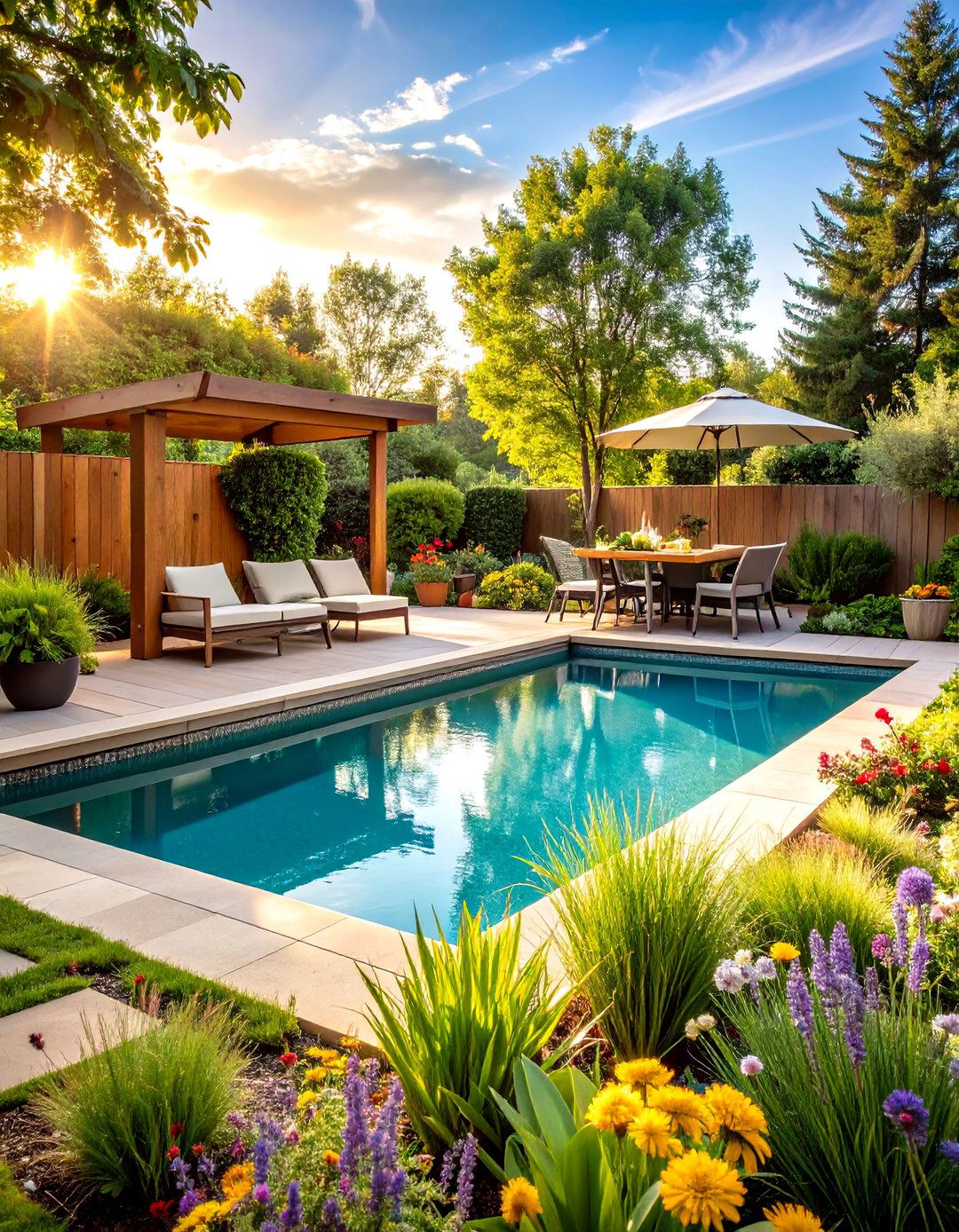
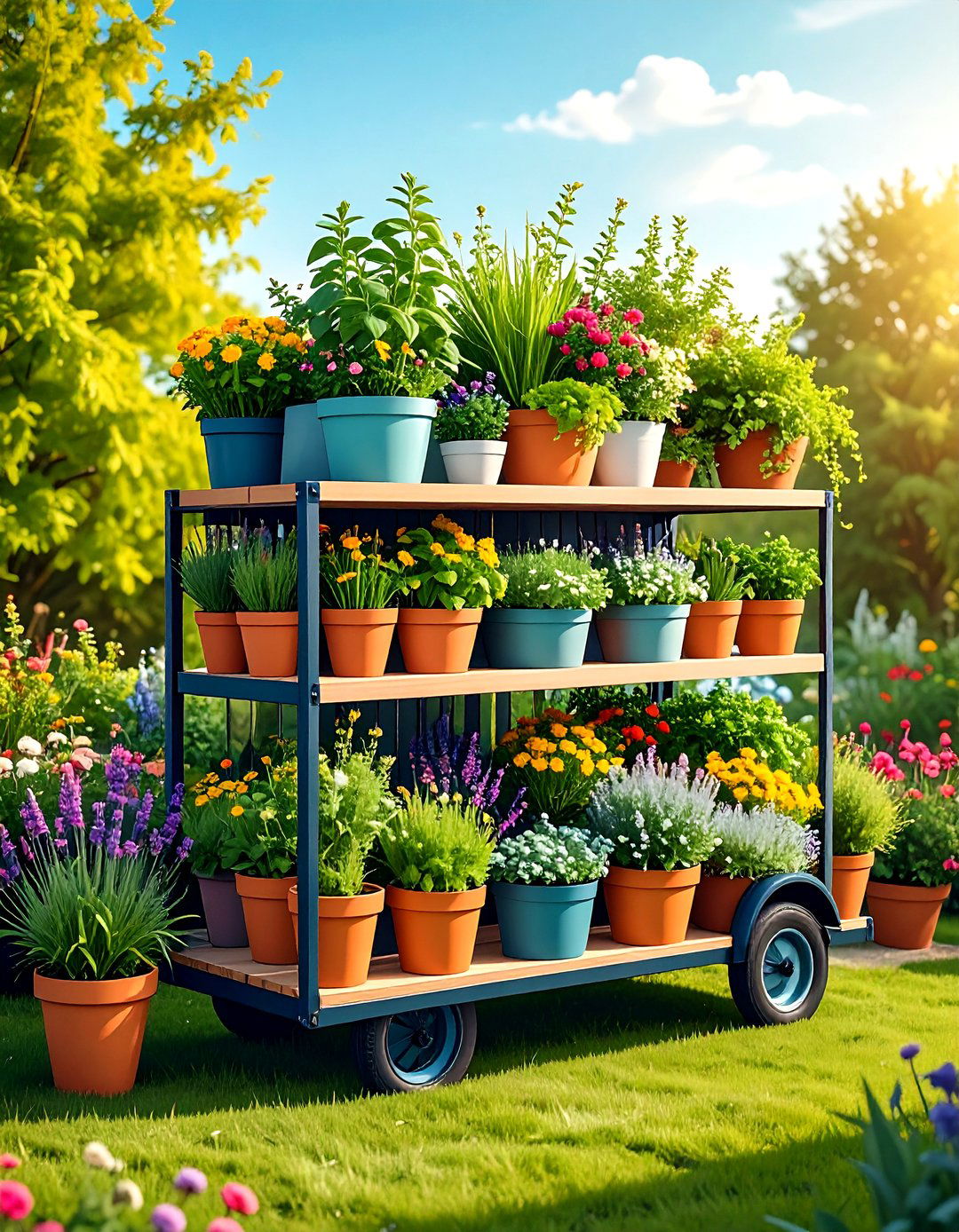
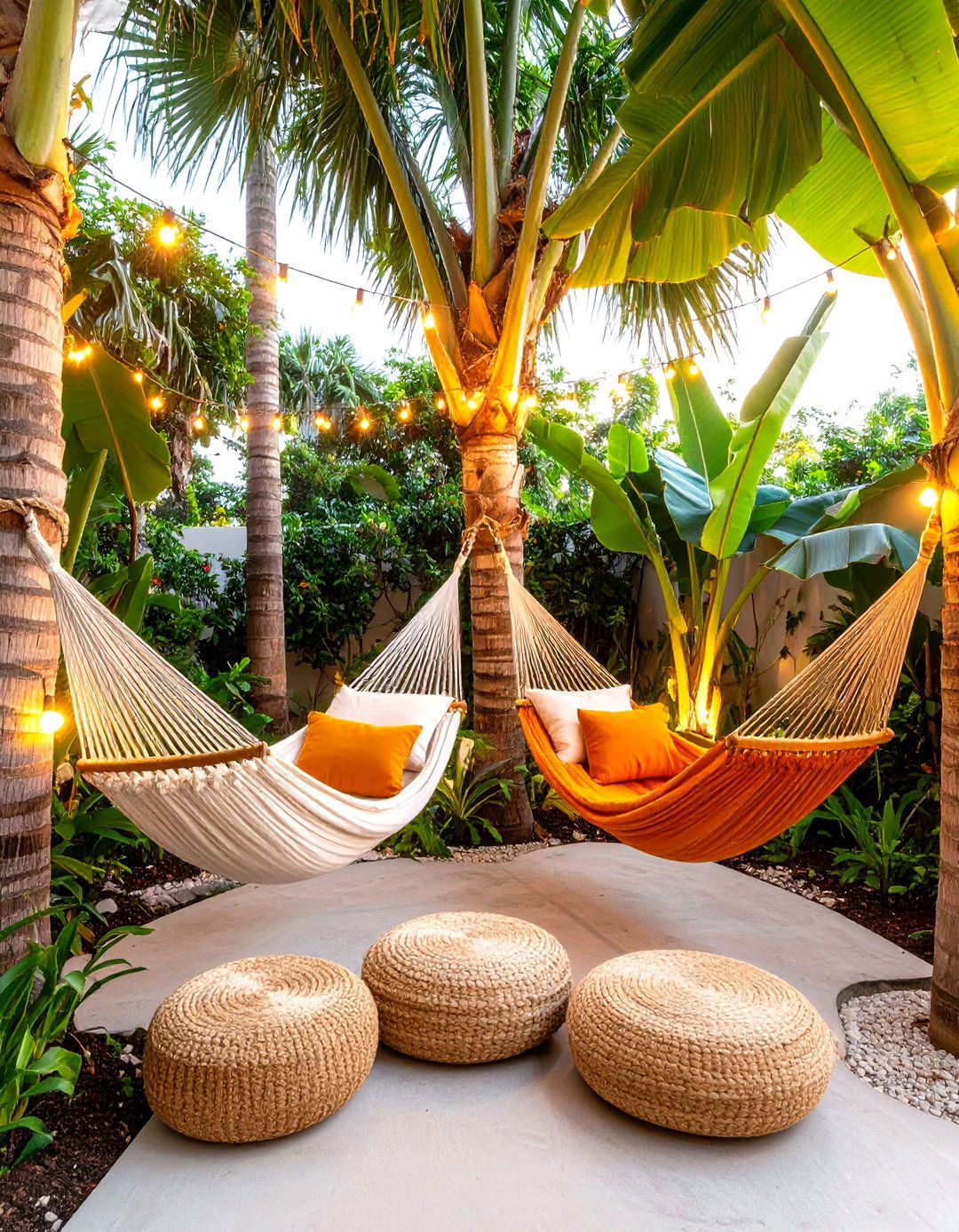

Leave a Reply